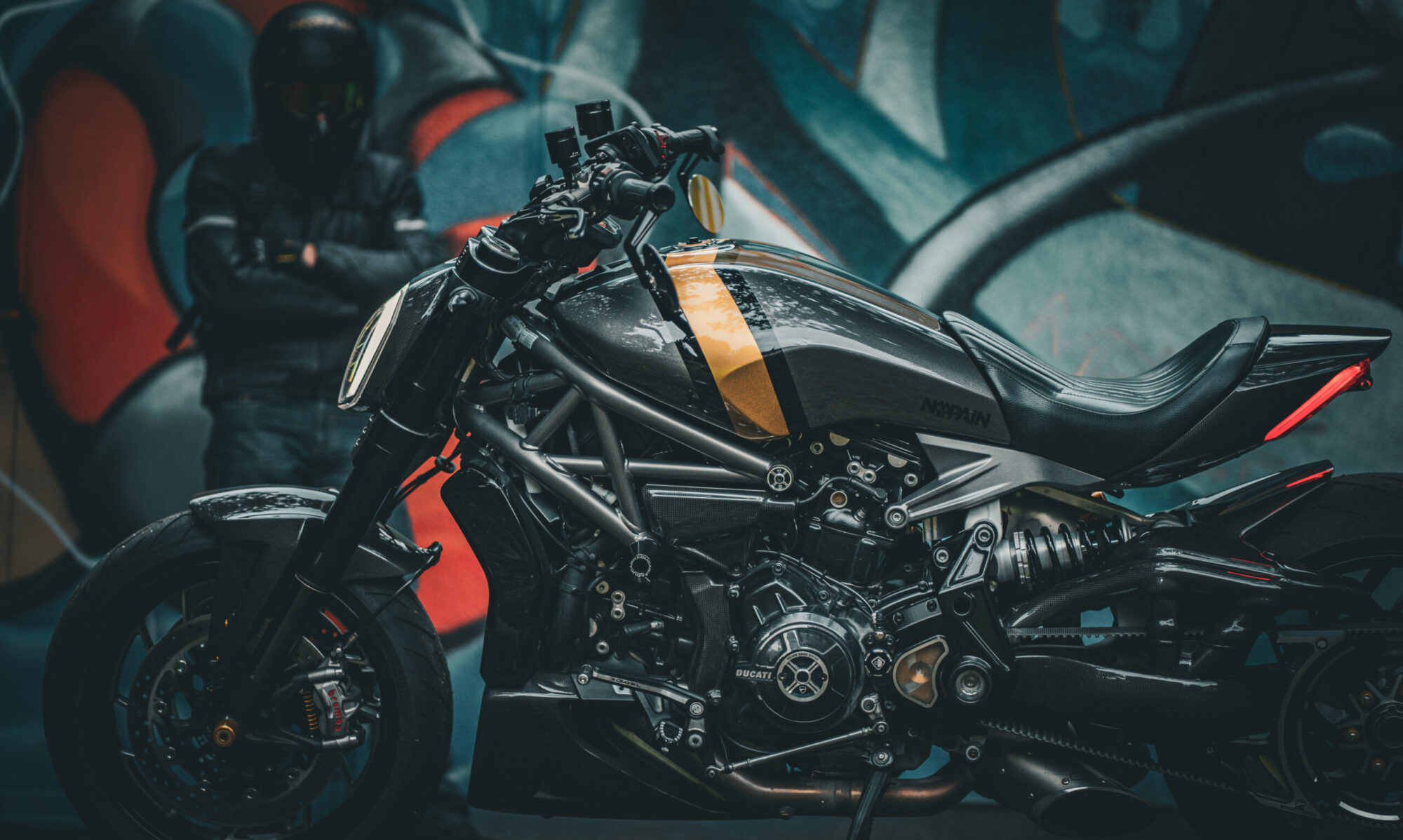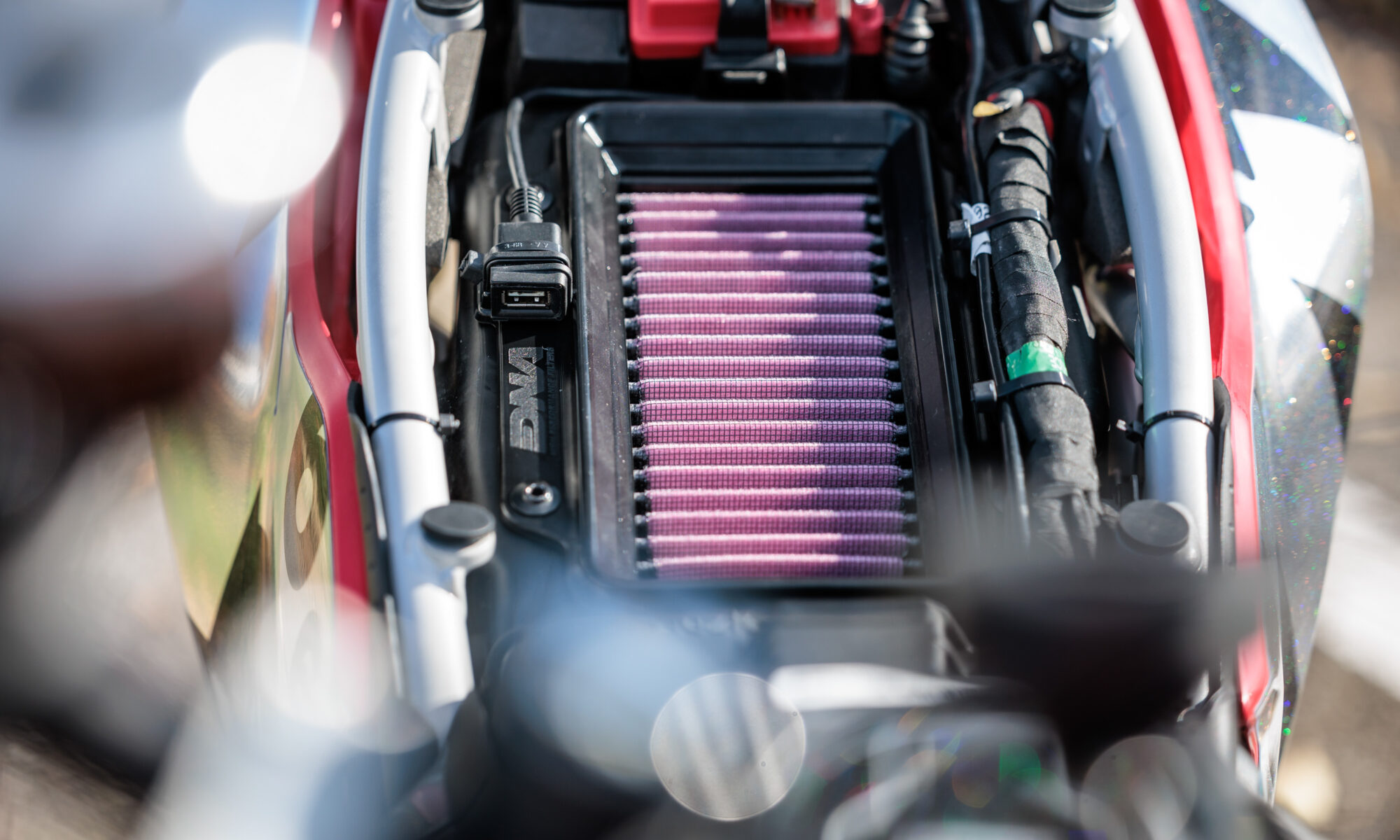More air for more torque and power – it’s that simple!
Essentially, a racing air filter increases airflow, thereby enhancing both engine power and responsiveness. However, be cautious, as low-quality aftermarket air filters could reduce filtration efficiency and lead to a too-lean air-fuel mixture.
With the brand-new DNA Air Filter and the DNA Air Filter & Air Cover Stage-2 Combo Kit for the Ducati Hypermotard 698 Mono, there’s no need for concern. The Greek company DNA High Performance Filters promises certified filtration efficiency of 98–99%, offering longer engine life, reduced fuel consumption, and easy maintenance. The standalone filter (for “road & race use”) increases airflow by +77%, while combining it with the open Stage-2 air filter cover (for “race use only”) boosts airflow by an impressive +161.4%. The filter is reusable, easy to clean, and fits plug-and-play into the original air filter box.
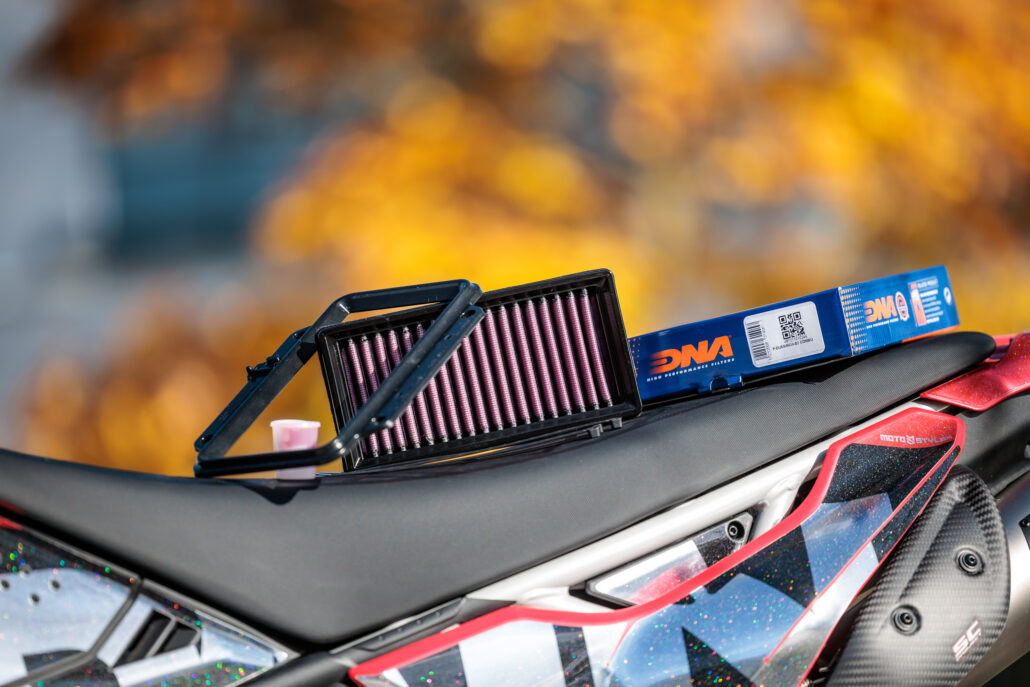
But how complex is the installation really? What noticeable performance gains does the DNA filter offer despite the street-legal Euro-5 exhaust and stock mapping, and is the improvement actually noticeable on the road? To find answers to these questions, we tested the DNA products on my Ducati Hypermotard 698 Mono and compared them on Martin Bauer’s Dynojet both with the stock components and with an open racing exhaust system.
Important! Replacing the filter is fully legal in every respect and does not affect the warranty without additional modifications, while the open air filter cover is intended solely for use in racing or on closed tracks. Additionally, for optimal performance, recalibrating the fuel injection system is recommended.
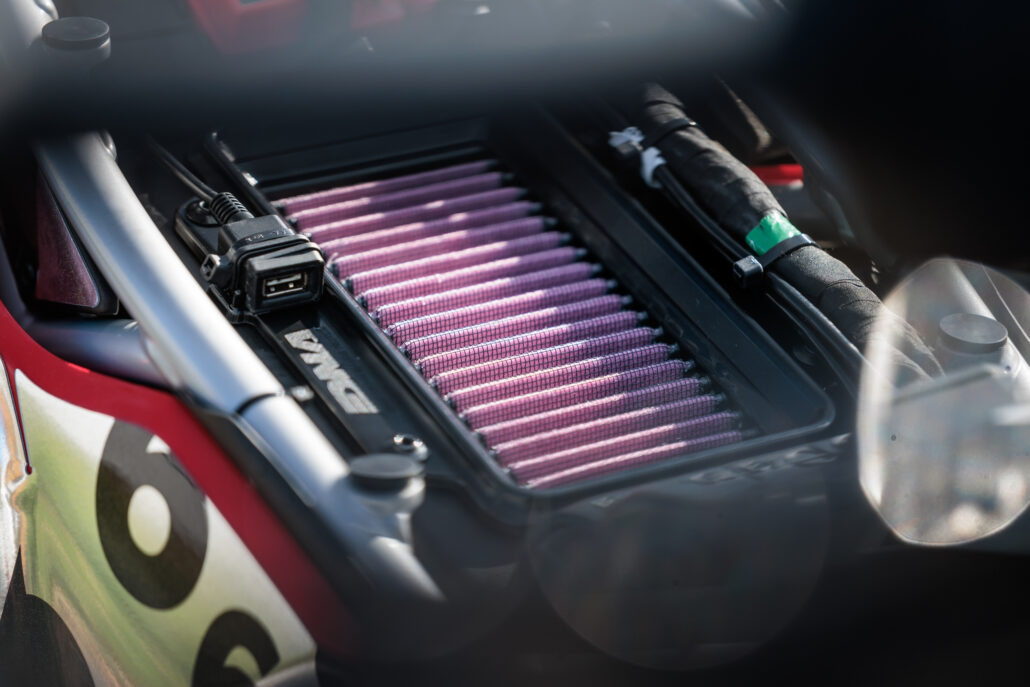
Installation of the air filter and open cover
Whether just the air filter is being swapped out or, as in our case, the air filter cover is also being replaced, both versions take a maximum of 15 minutes to install. You’ll need a 4mm hex key, wire cutters, two steady hands, and a basic understanding of the short, straightforward installation guide. In short, the process is foolproof.
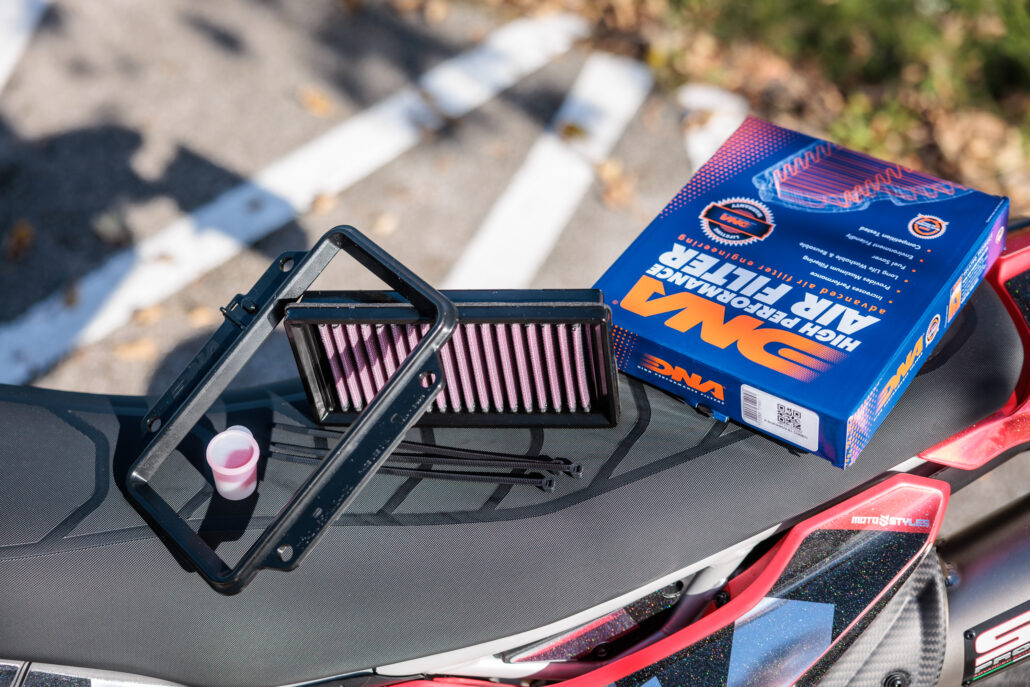
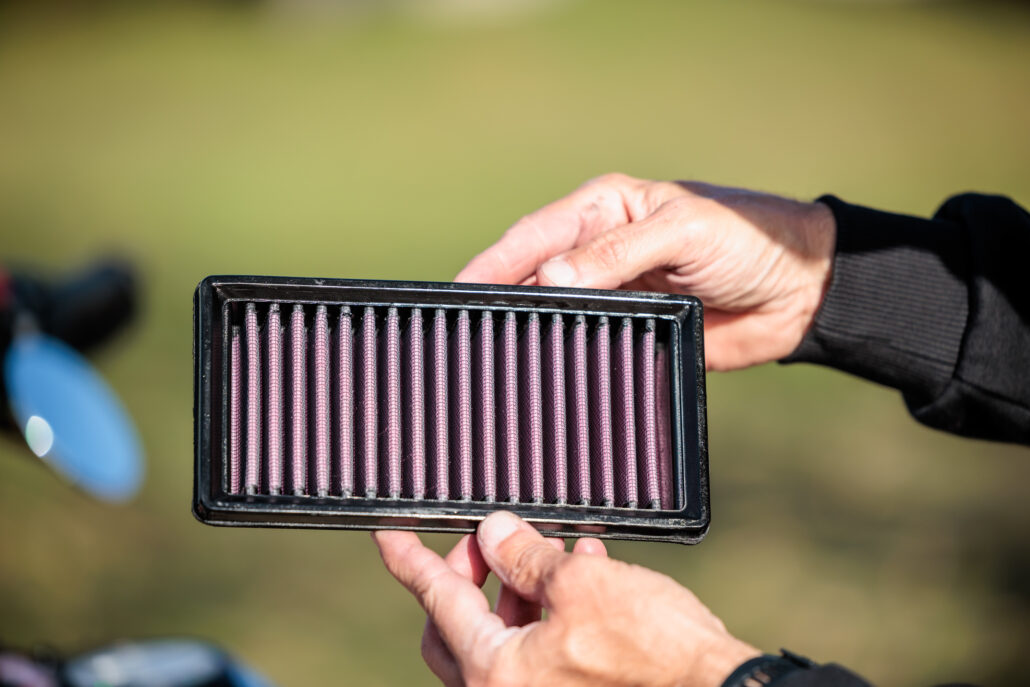
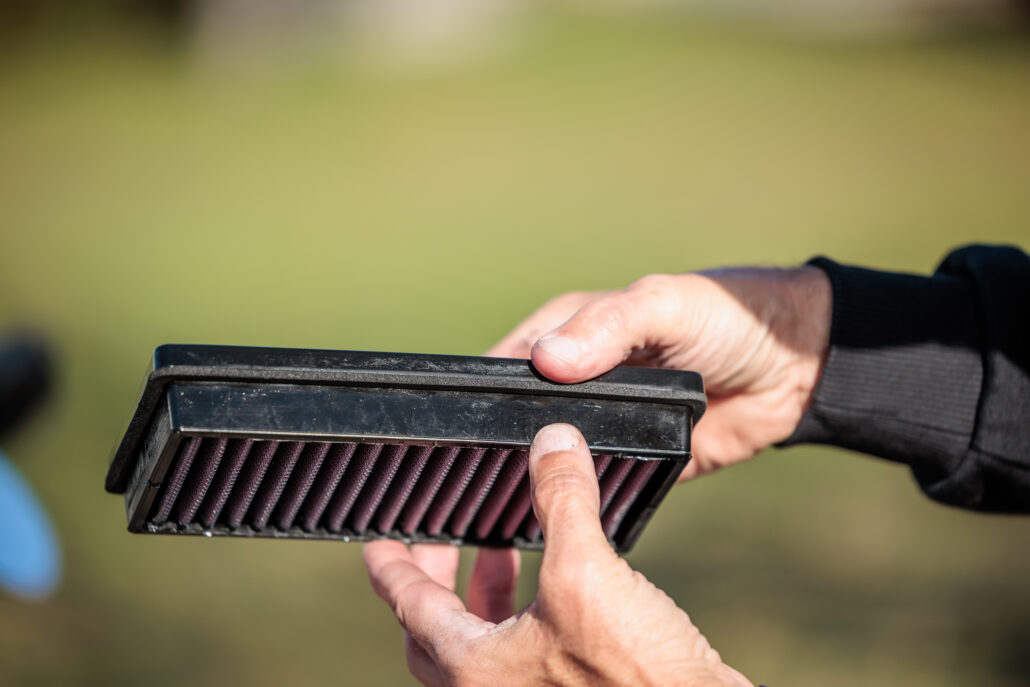
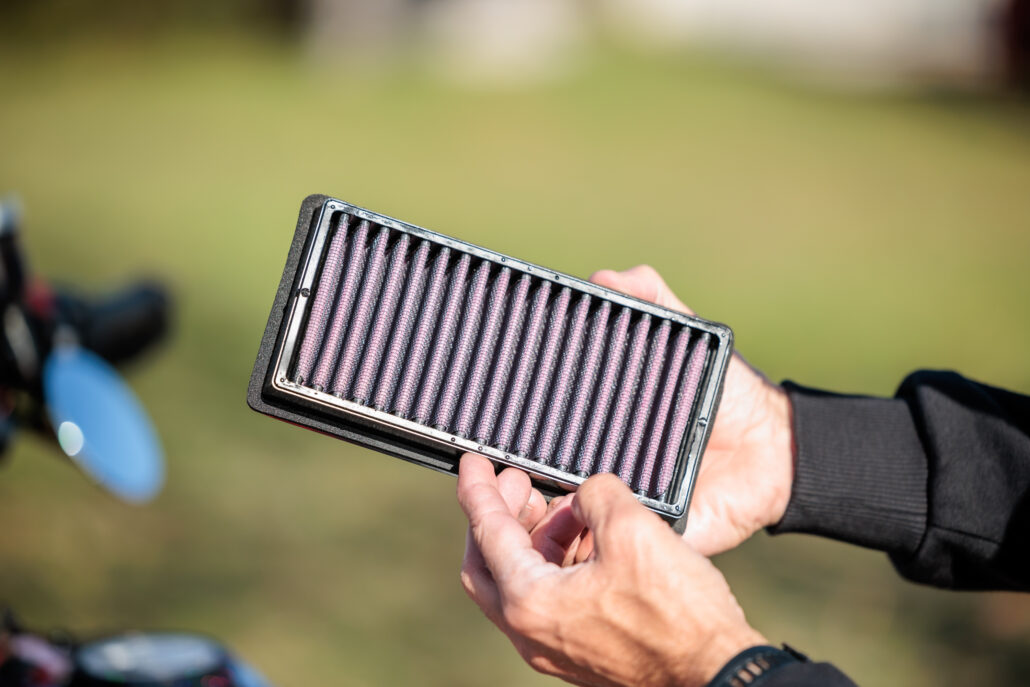
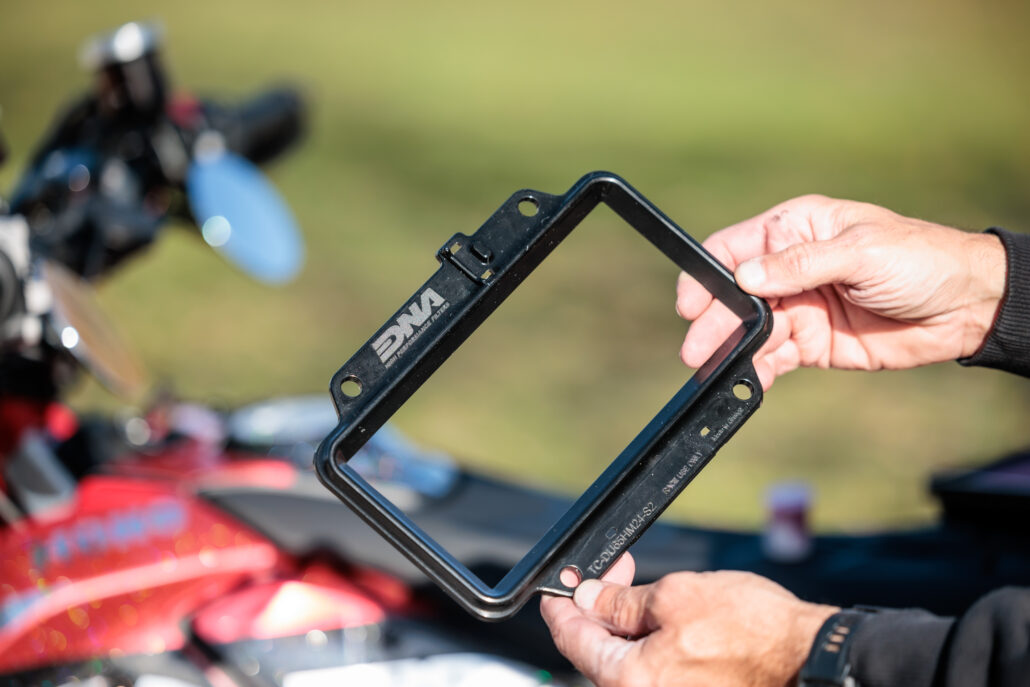
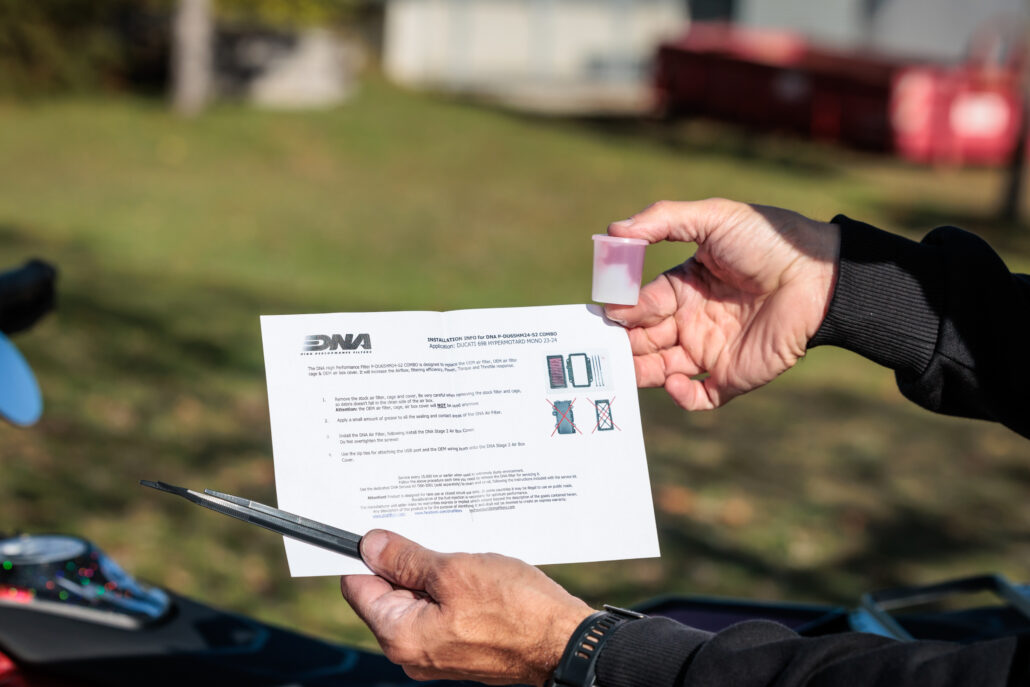
The DNA Air Filter & Air Cover Stage-2 Combo replaces both the OEM air filter and the OEM air filter cage, along with the nearly fully enclosed OEM air filter cover. We removed the four original zip ties, took off the stock cover, air filter, and cage, and were careful to ensure no dirt entered the air filter housing or the inner side of the DNA air filter.
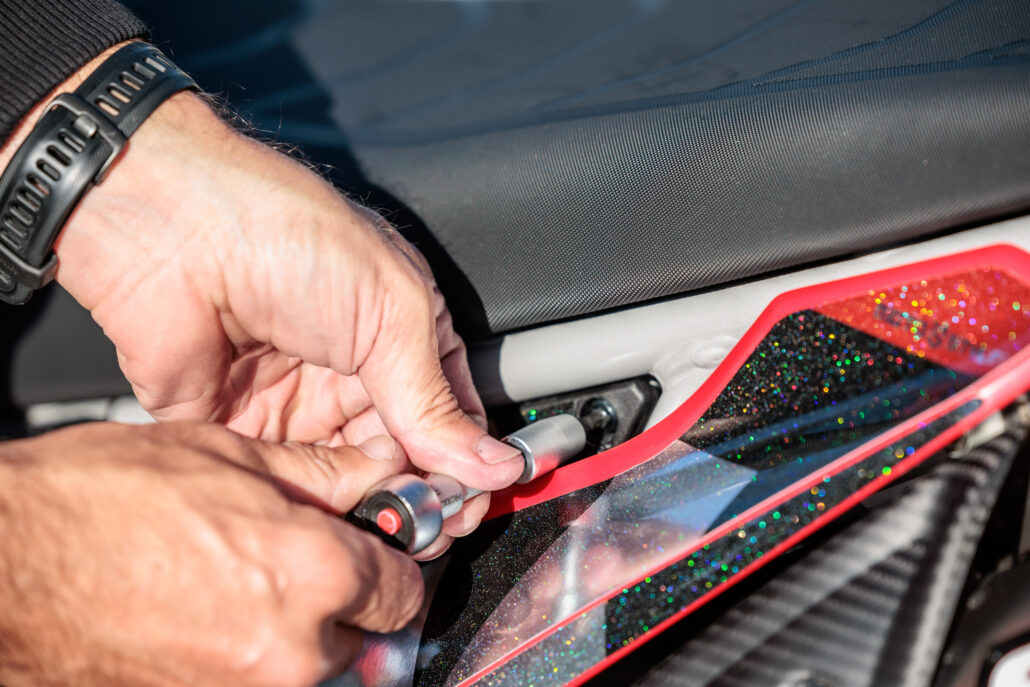
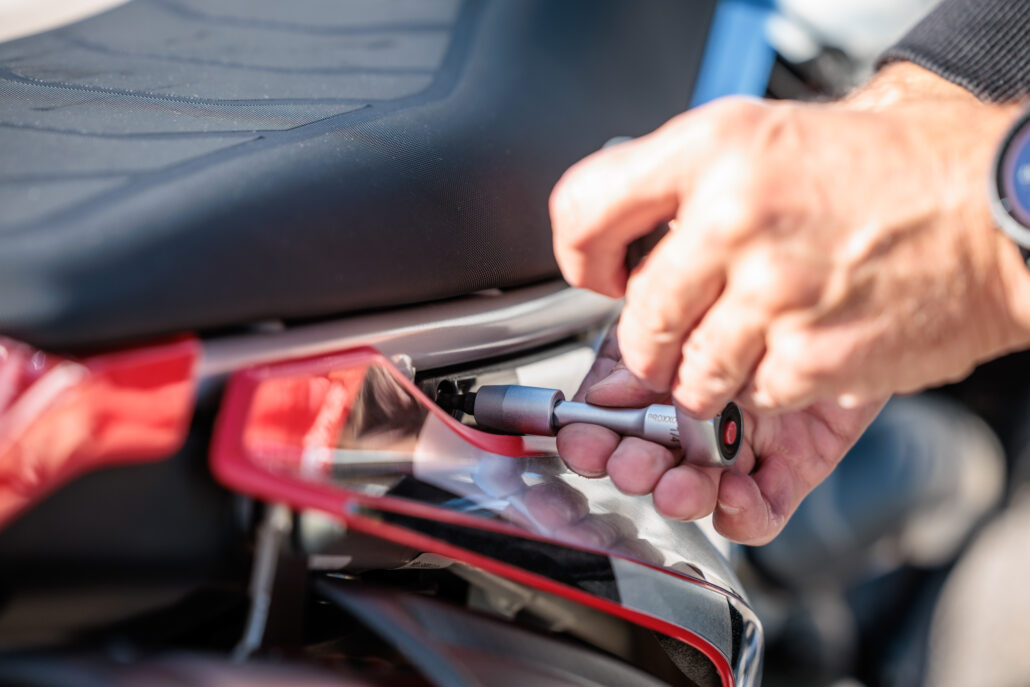

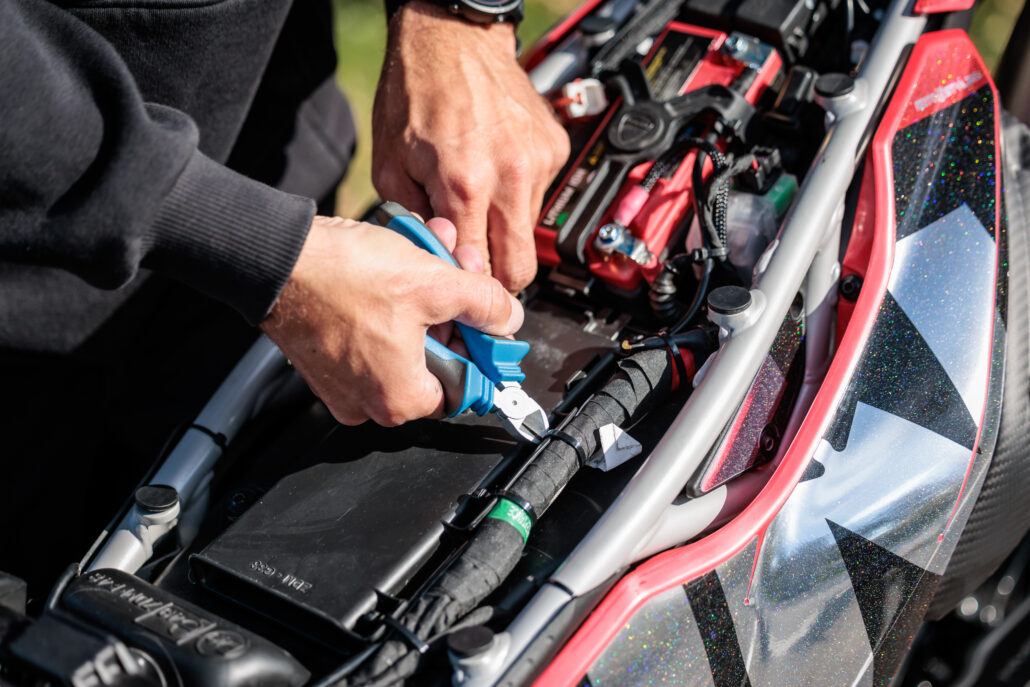
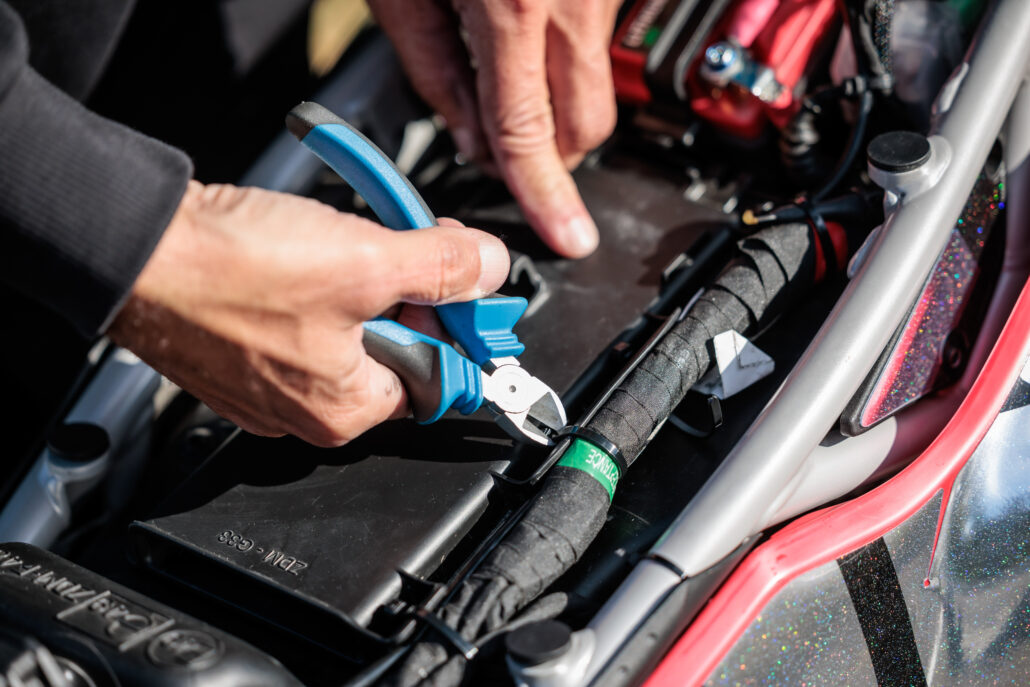




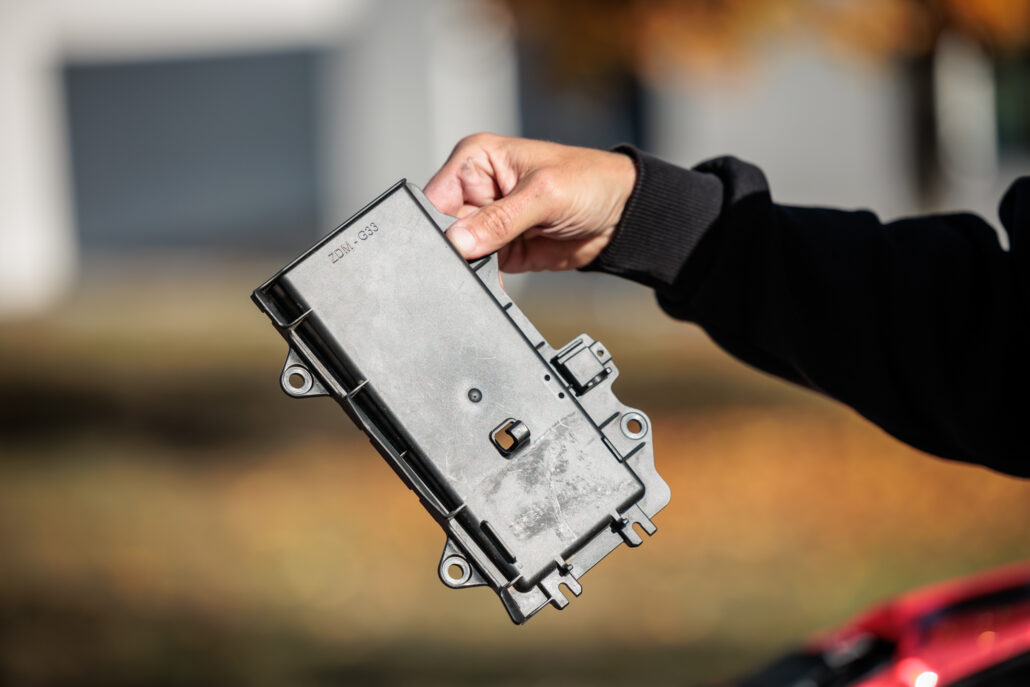
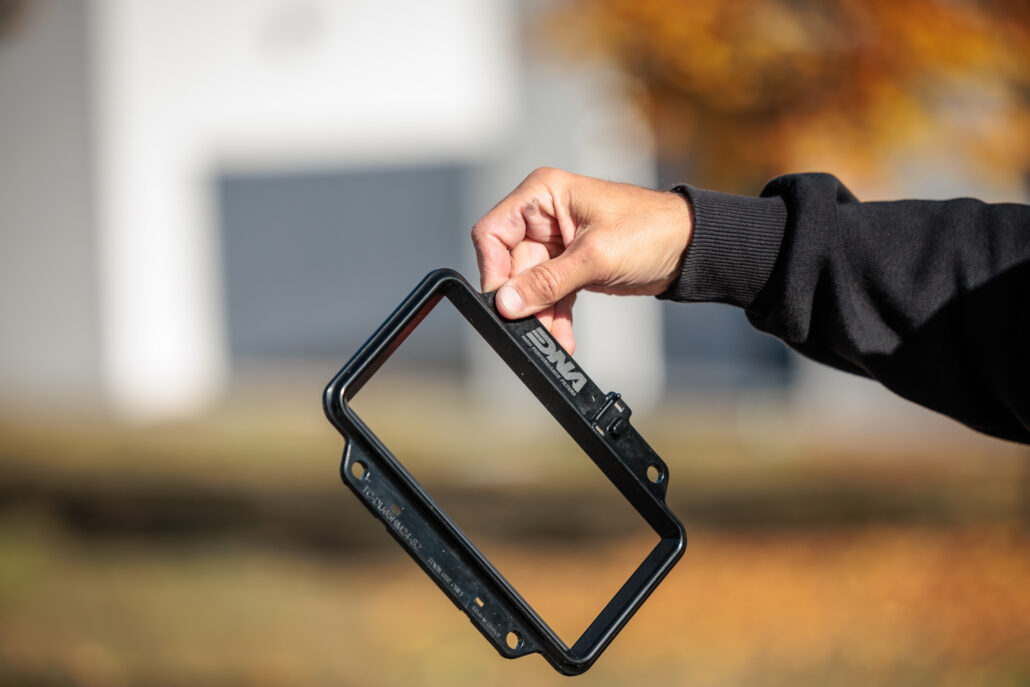

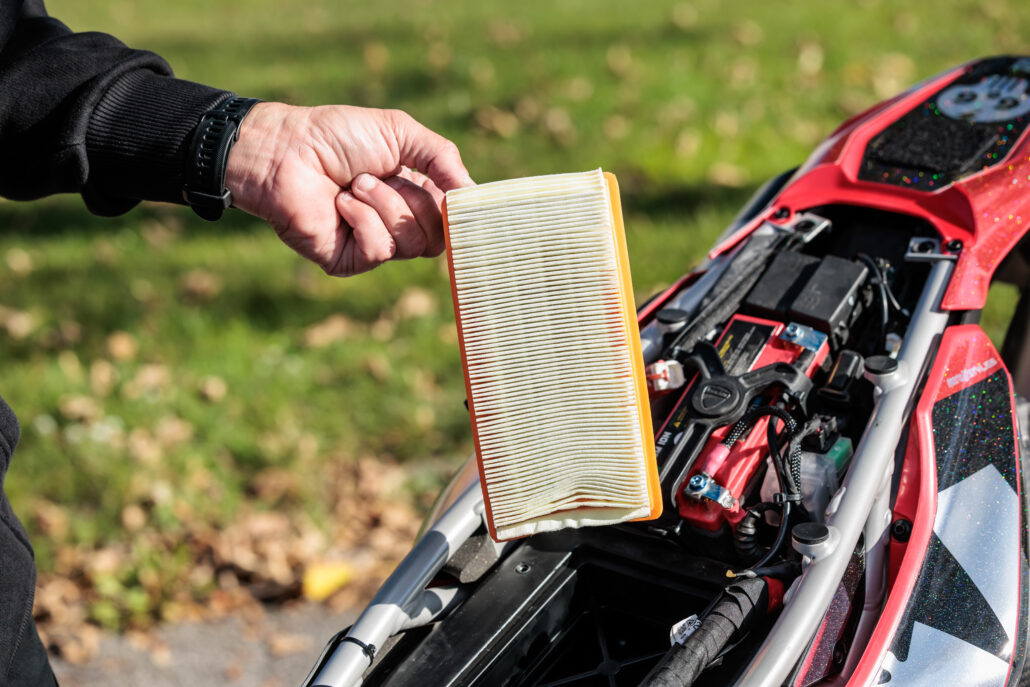
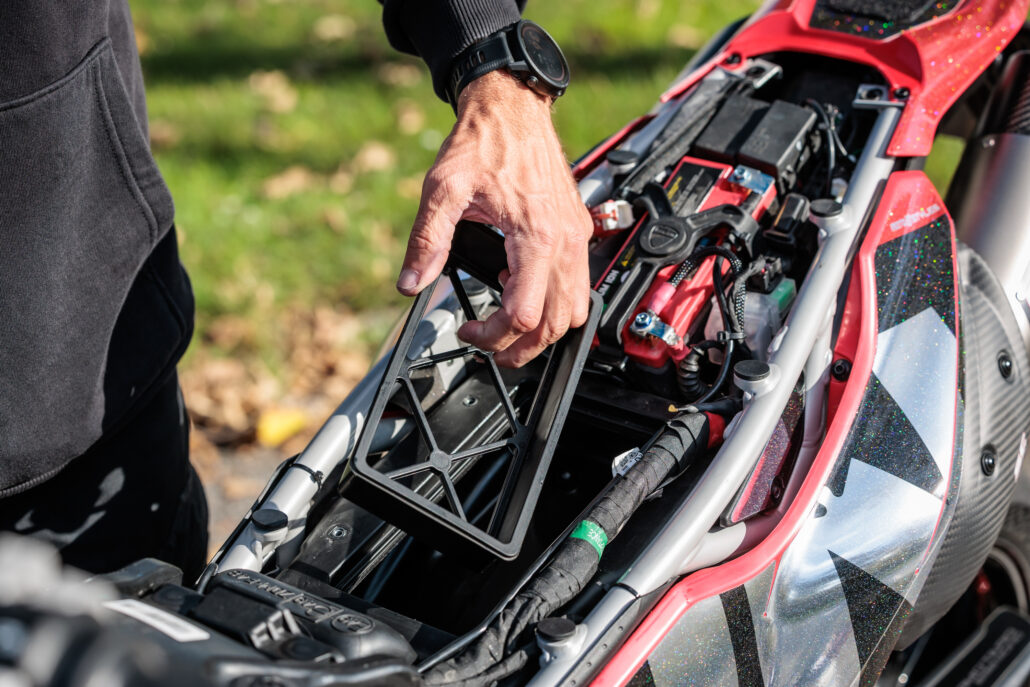
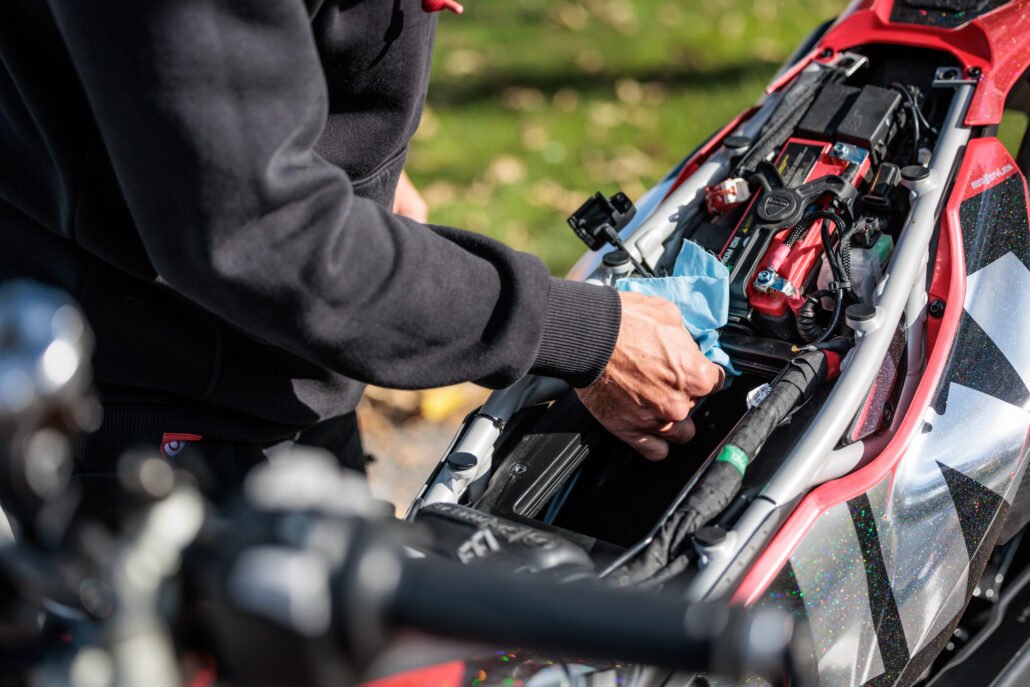
Next, we applied a small amount of the supplied red grease to the DNA air filter’s sealing and contact surfaces and placed it solo in the air filter housing. We then mounted the DNA Stage-2 air filter cover with the four existing OEM screws, being cautious not to overtighten them.
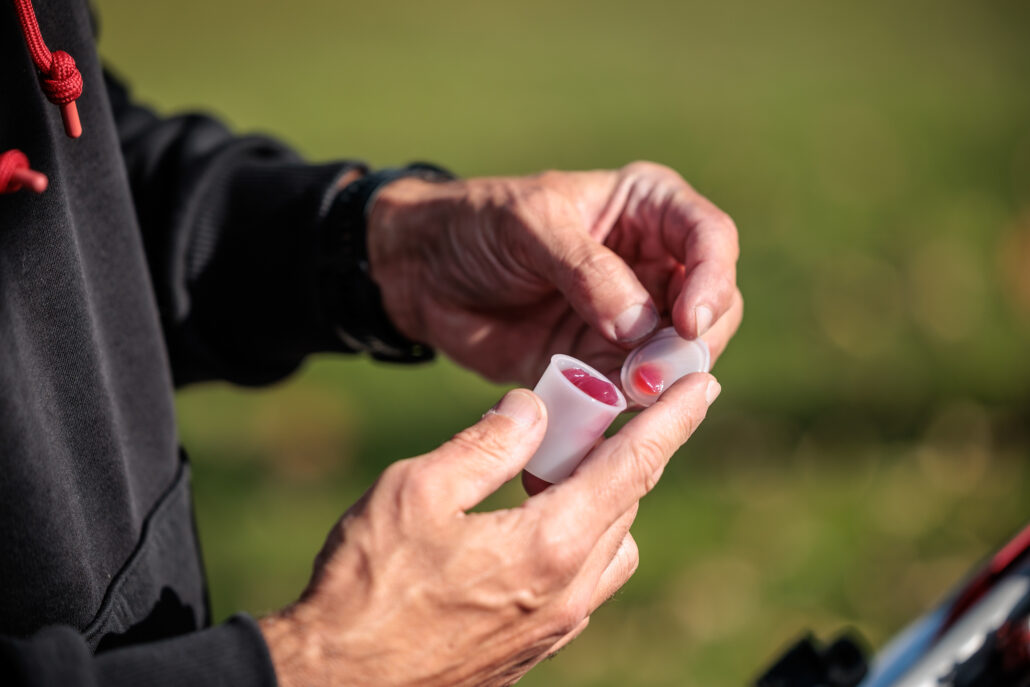
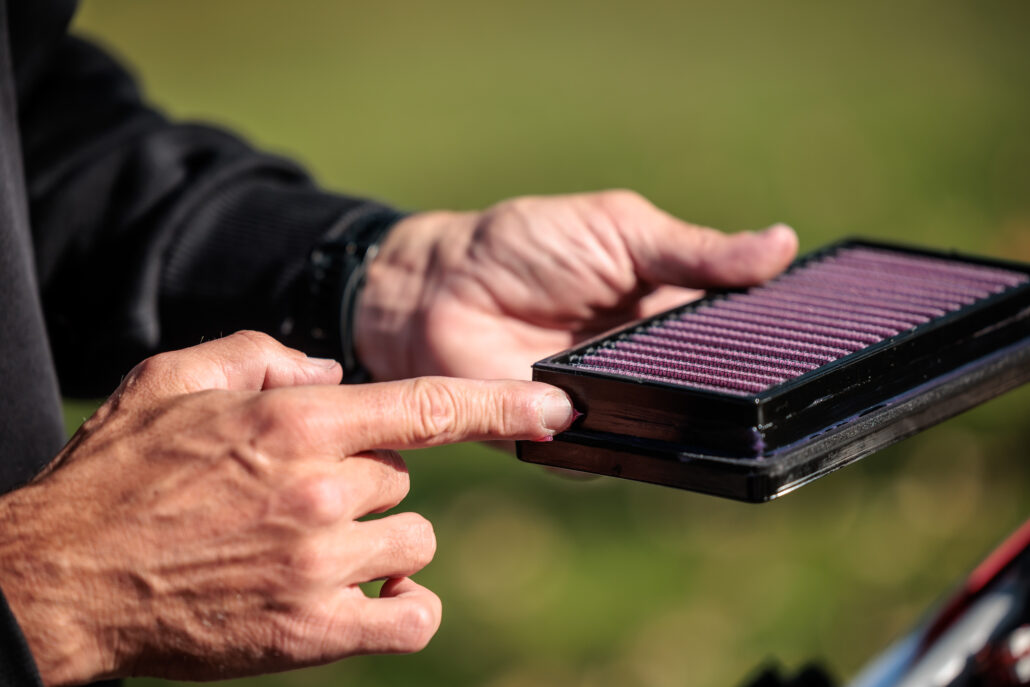

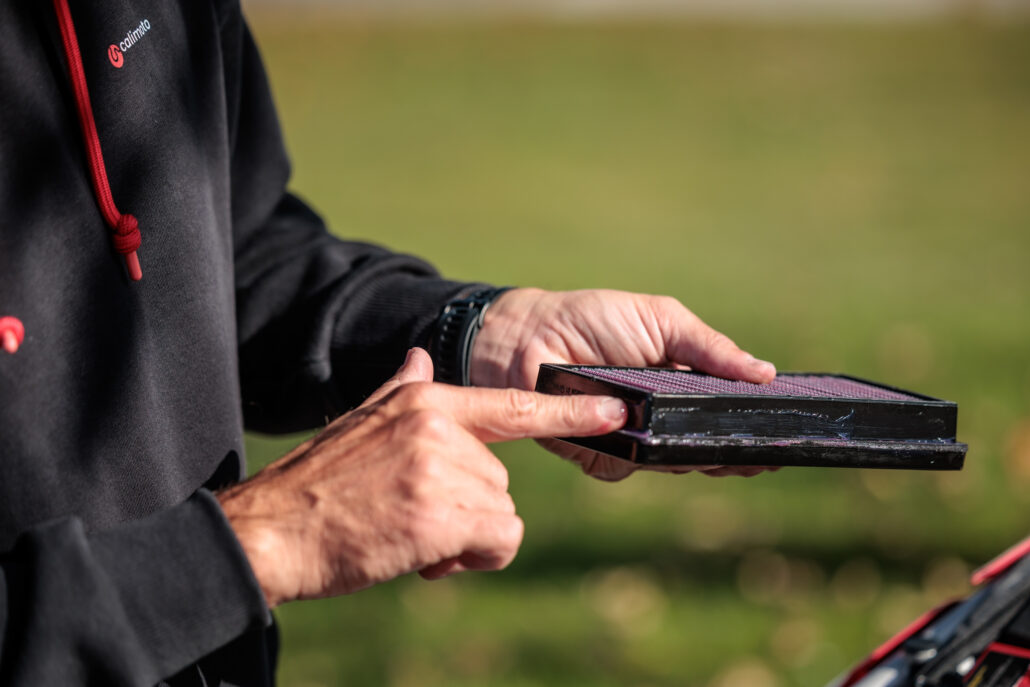
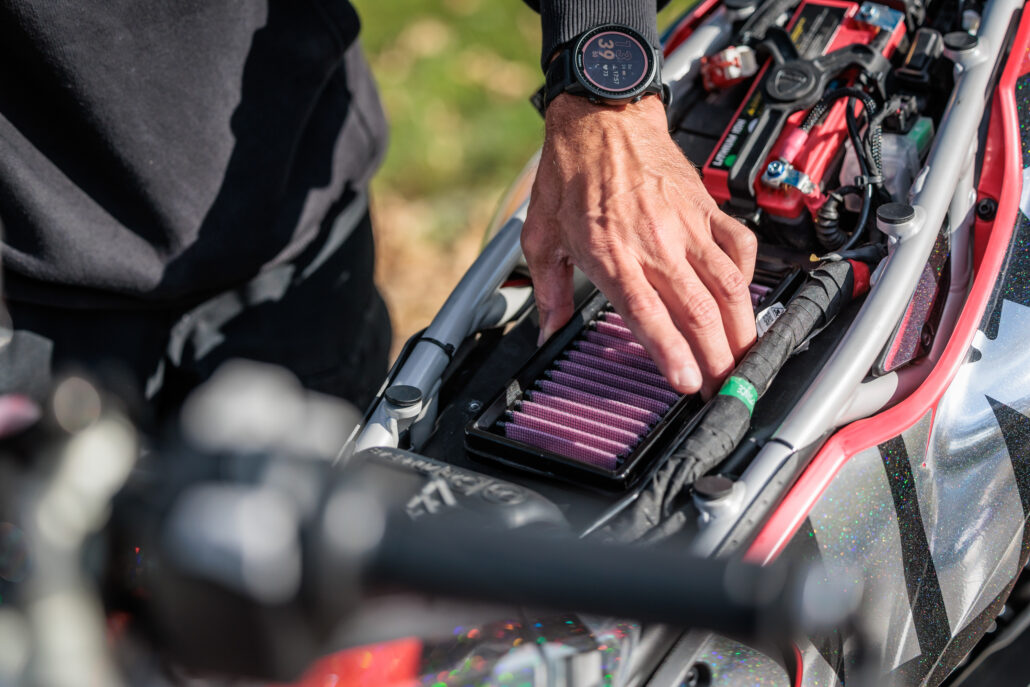
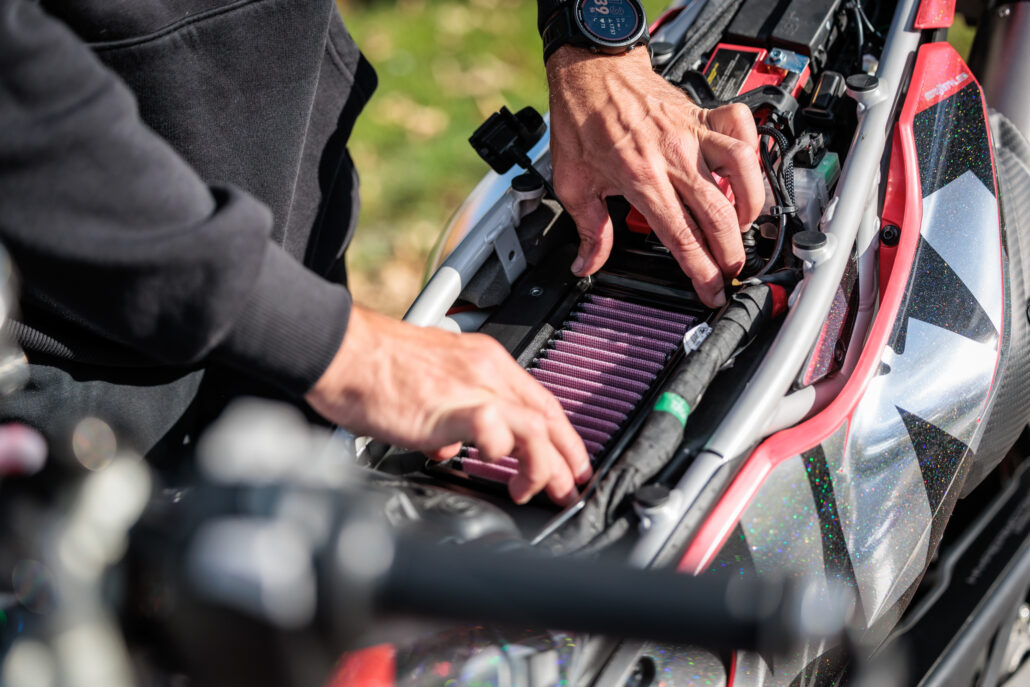
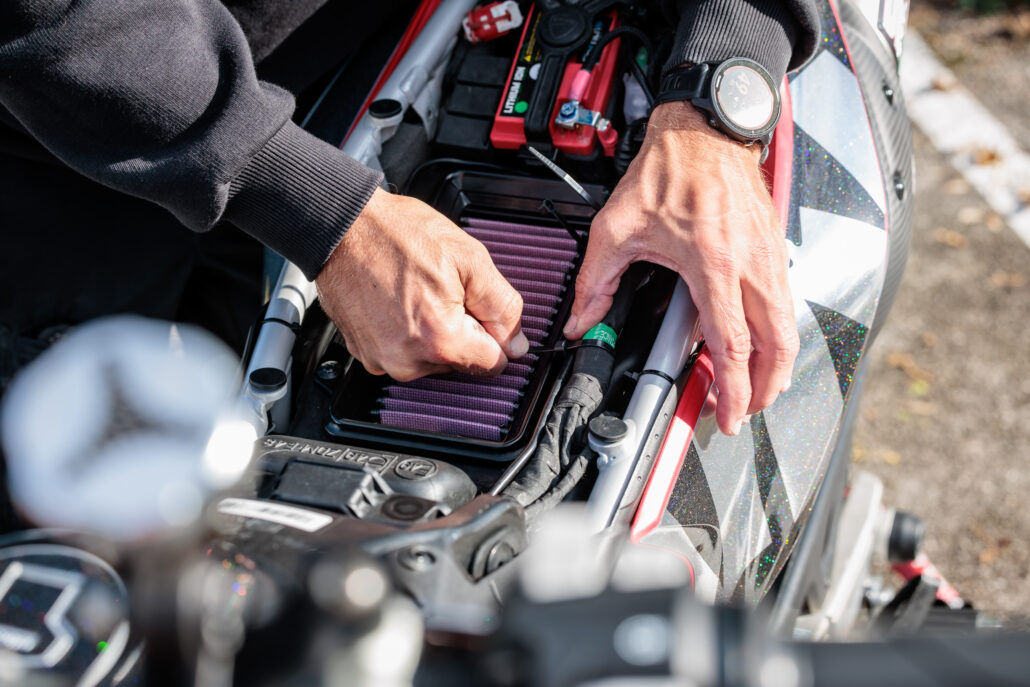
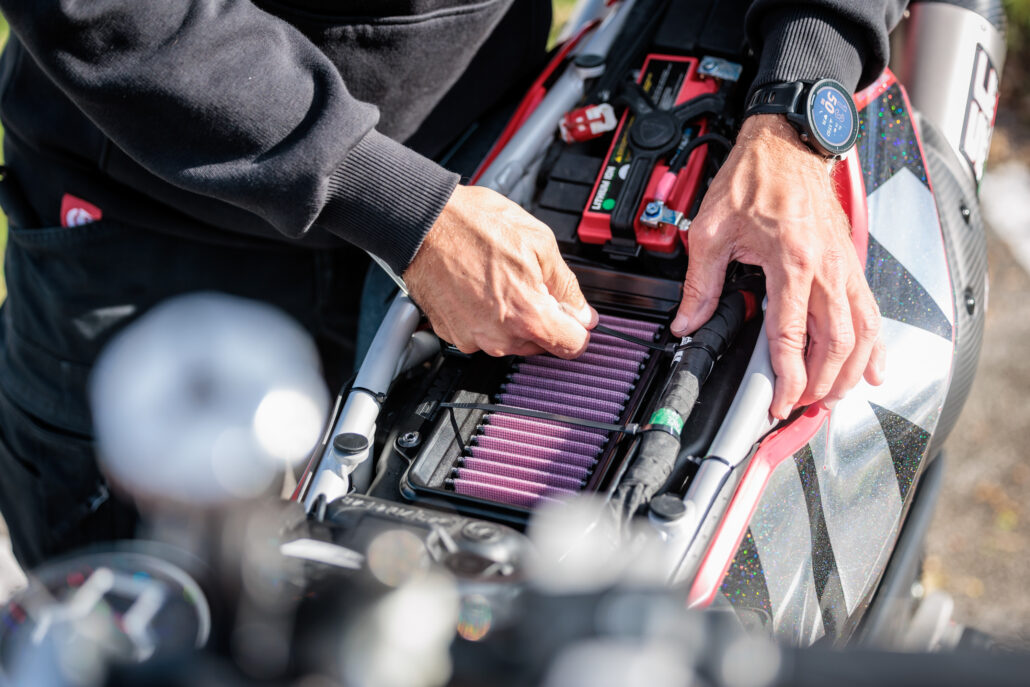
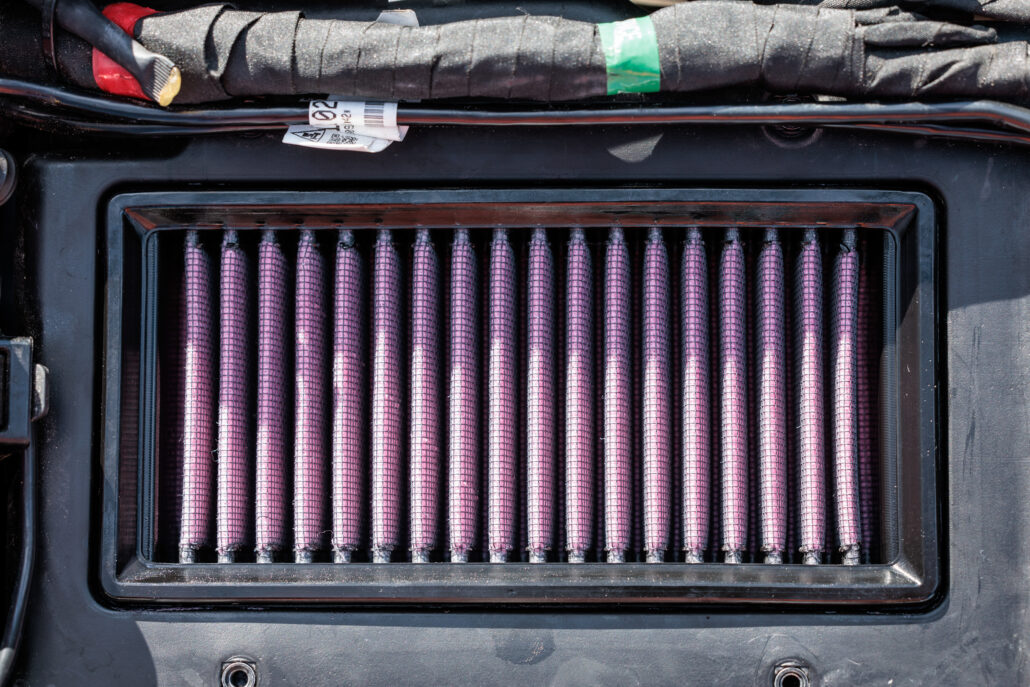
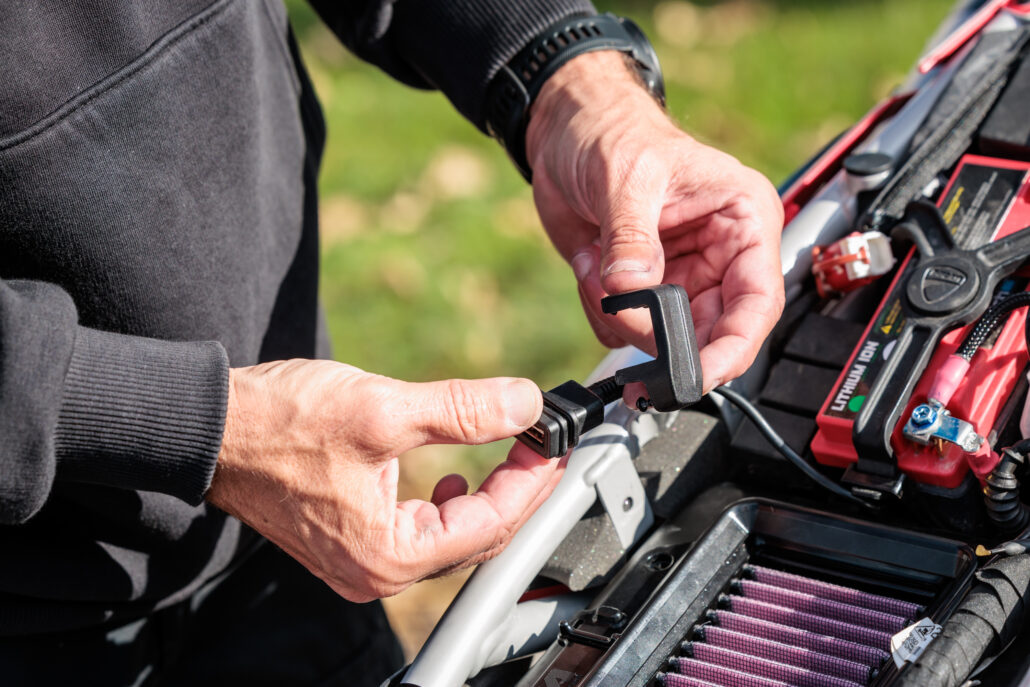
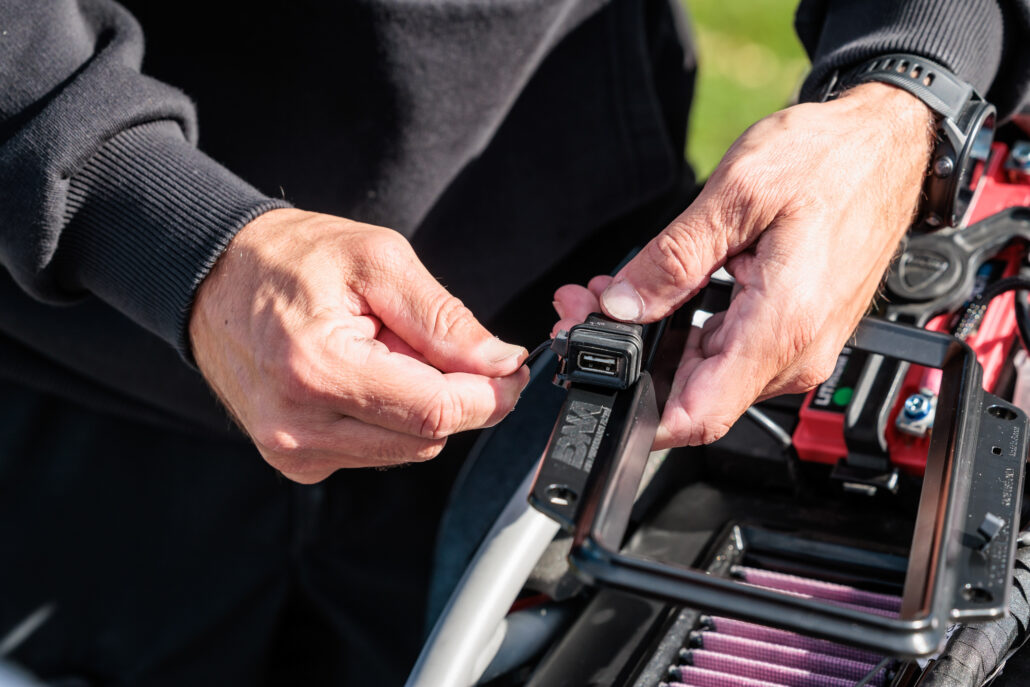

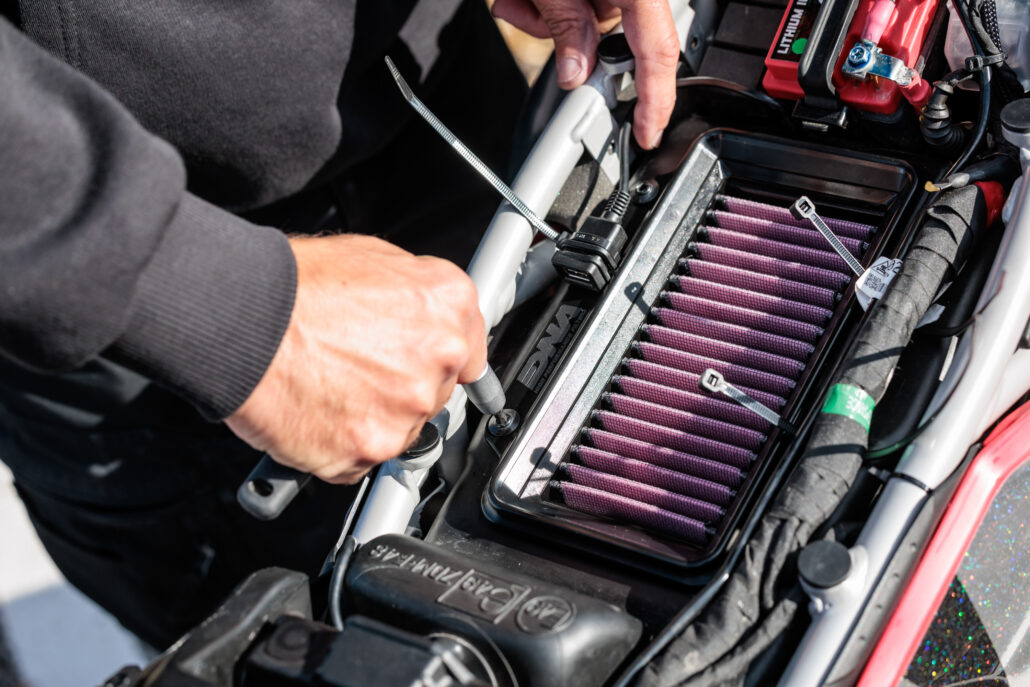

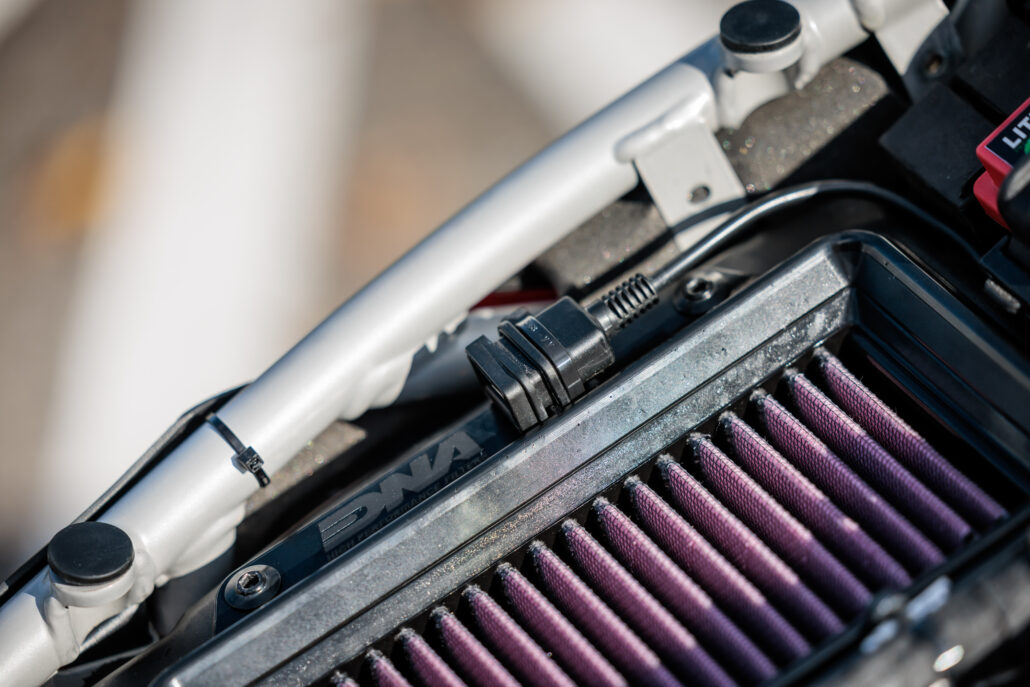
Using the three included zip ties, we secured the OEM wiring harness and the USB port to the DNA Stage-2 air filter cover. All cables should avoid contact with the motorcycle’s frame, as it can become very hot.
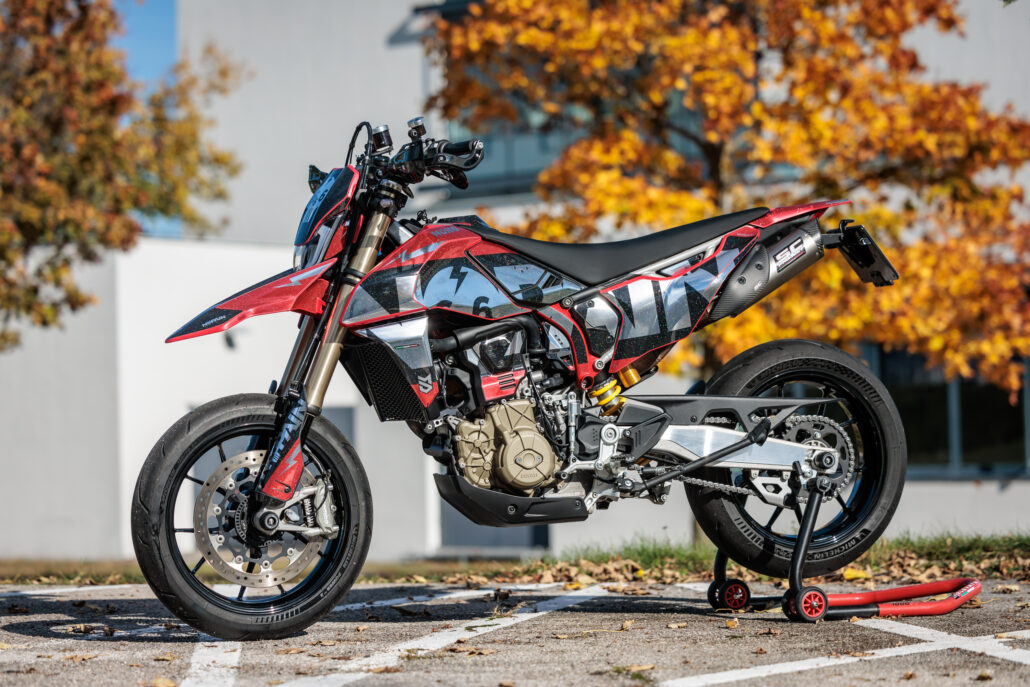
ECU Adjustment
After installing the filter and cover, we left the motorcycle idle for 10 minutes so that the ECU (Electronic Control Unit) could adjust the injection times and air-fuel ratio for more efficient combustion. We then took the bike on over 100 kilometers of road, utilizing all RPM ranges and gears to properly calibrate the ECU and ensure consistent results on the dyno.
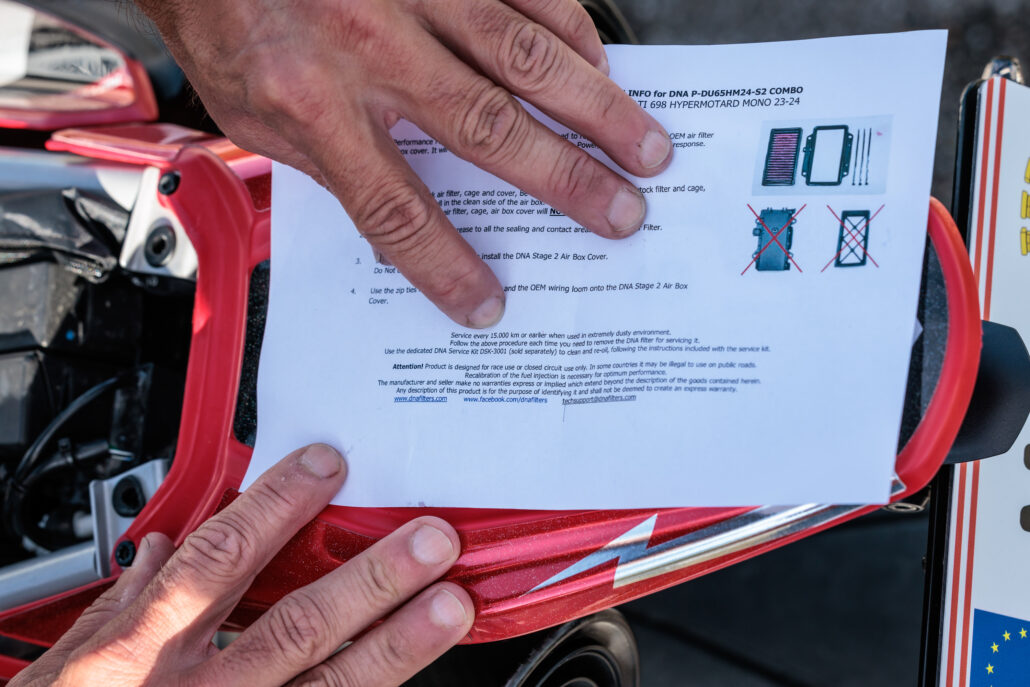
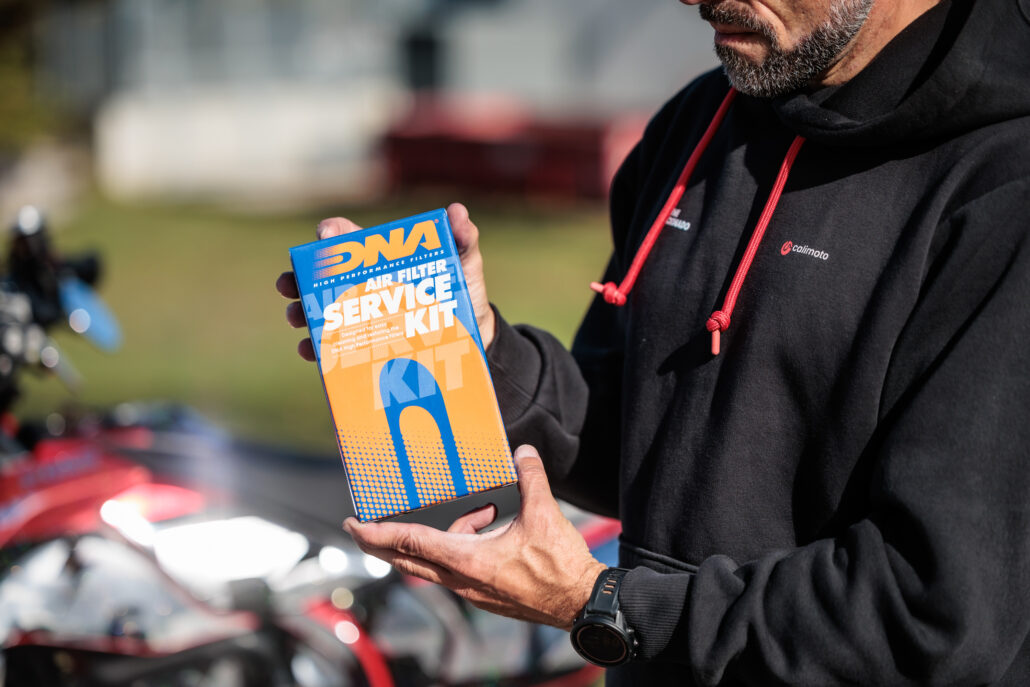

From a technical point of view, the installation was thus complete. Maintenance for the DNA air filter is recommended every 15,000 kilometers—or sooner if the motorcycle is used in extremely dusty conditions. To clean and oil the DNA air filter, only the special DNA Service Kit DSK-3001 (sold separately) should be used; the instructions included in the service kit must be strictly followed. The motto for re-oiling is “less is more.”
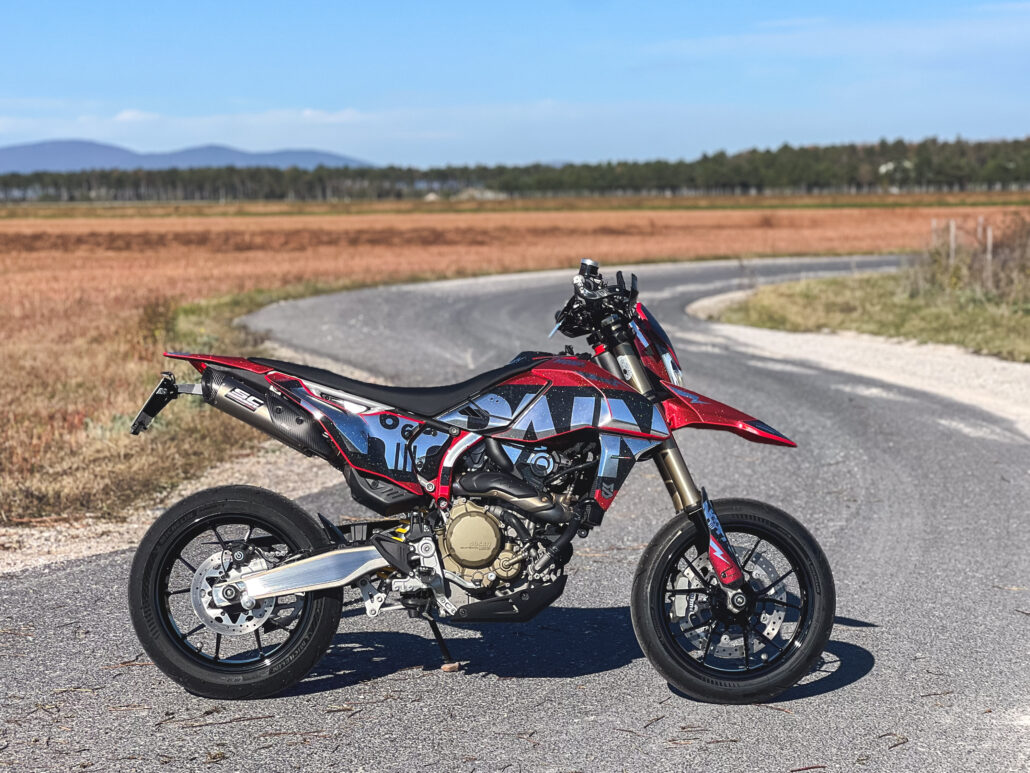
The DNA Stage-2 Combo in Practice
Immediately after starting the engine, we noticed that the airbox with the open cover operated more intensely and mechanically. During multiple sound level measurements while idle, with the device placed next to the air filter box and engine – both while idle and at a stationary noise measurement engine speed of 4,875 RPM – the intake noises were completely overshadowed by the general engine and exhaust noise.
Conclusion: No measurable increase in volume while idle.
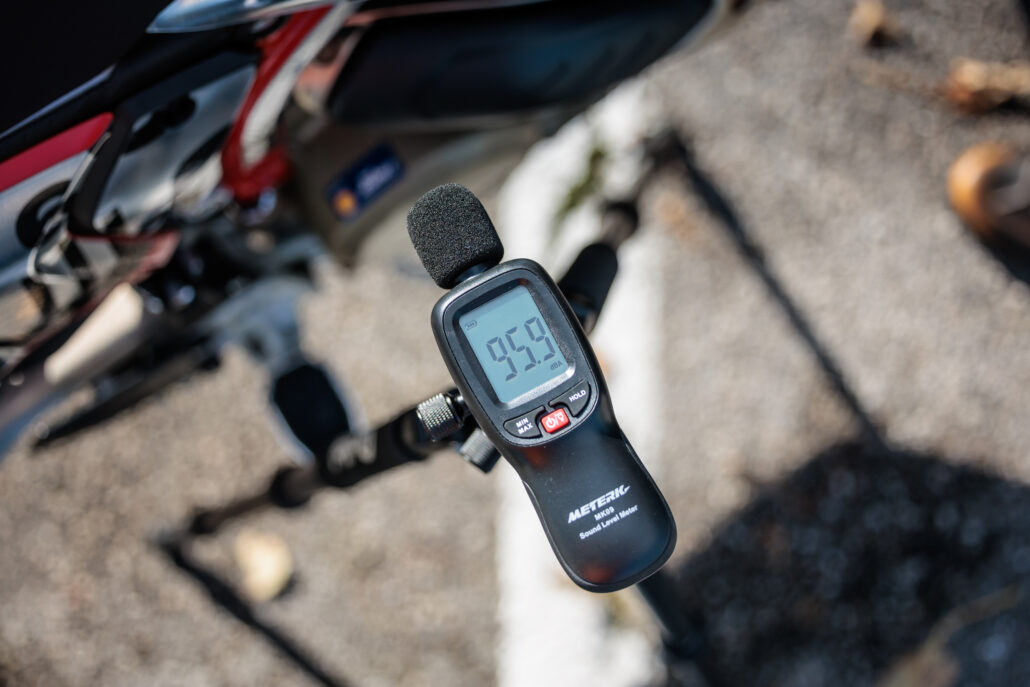
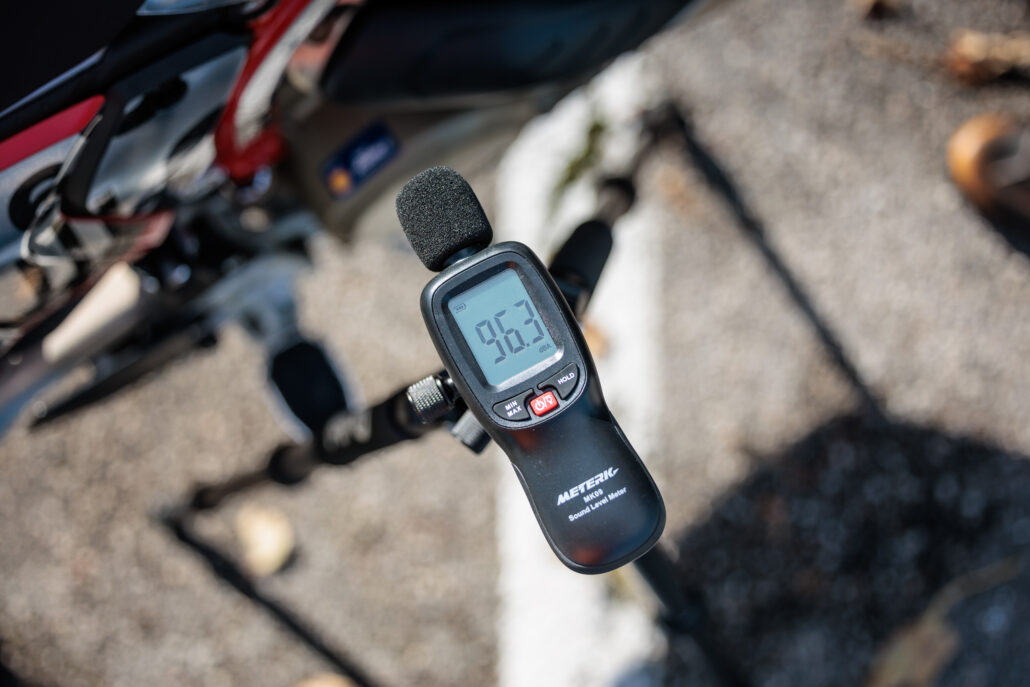
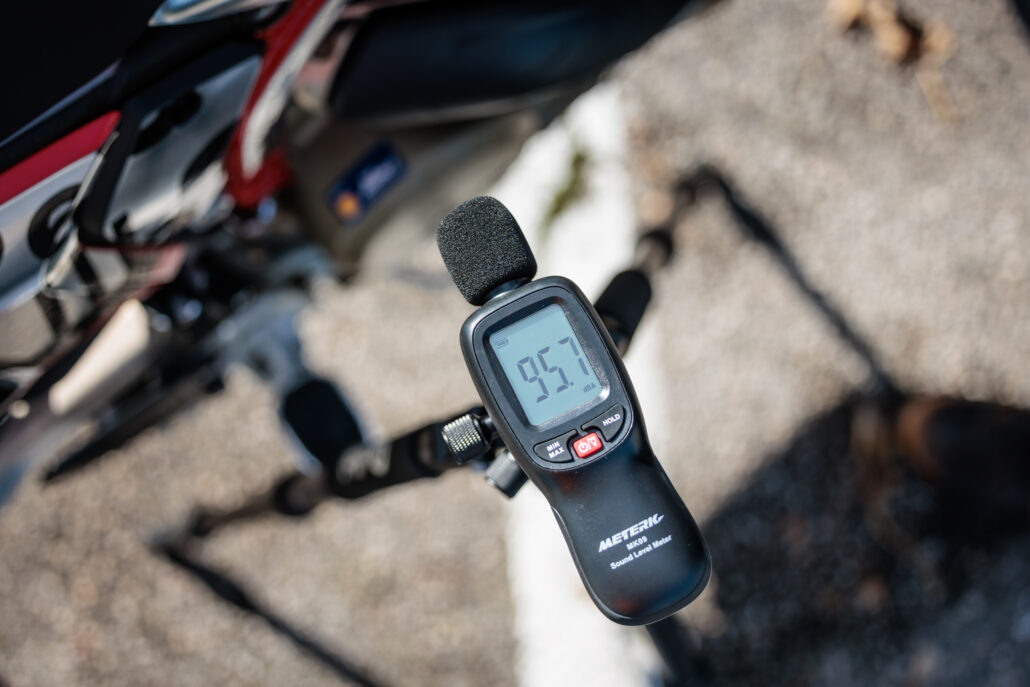
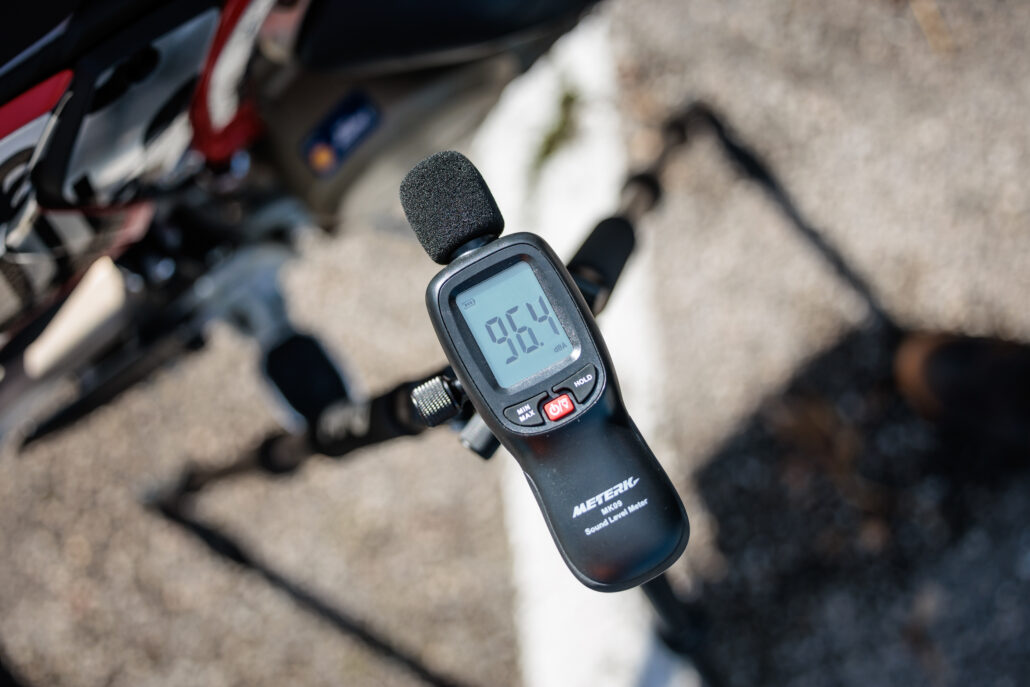
On the road, we experienced the next revelation. From about 4,500 RPM, the Hyper responded noticeably better to throttle inputs compared to the stock setup, allowing for 50 km/h in second gear without any load change reactions in urban areas. Starting at 5,500 RPM, the bike pulled aggressively, and there was no stopping until the rev limiter LEDs lit up at 10,000 RPM. The difference was impressive, and there was no room for self-delusion. The sound also changed: The already throaty tone of the legal SC-Project Slip-Ons became even raspier and deeper, taking on a noticeably sportier character due to the increased airflow.
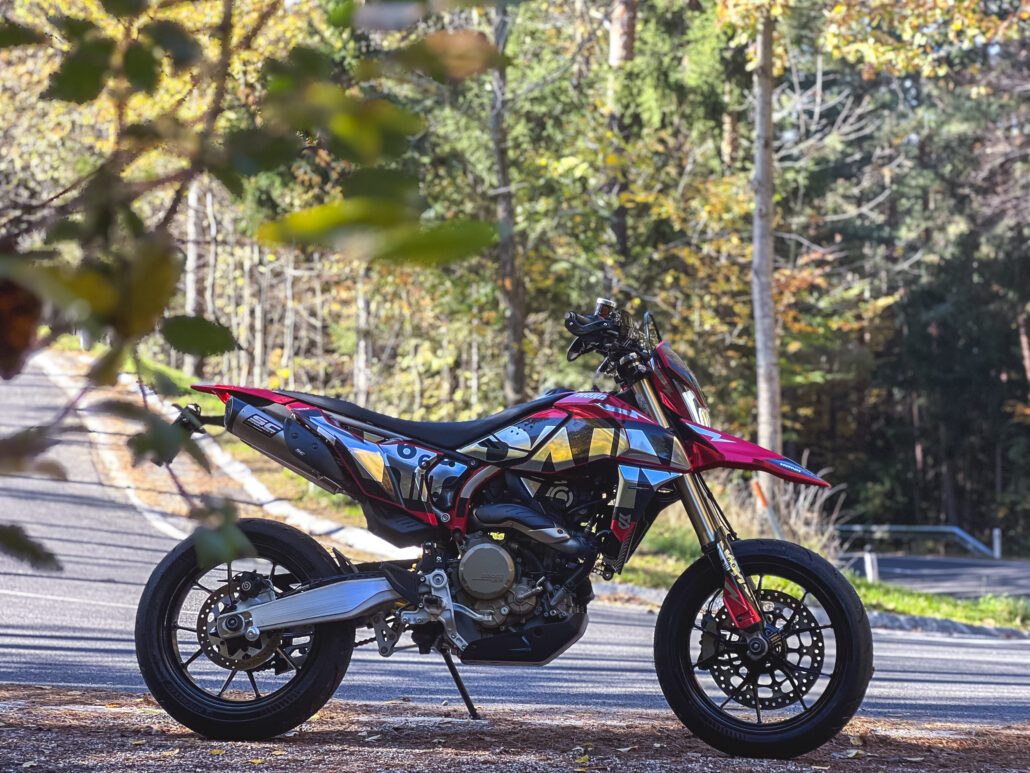
Summary of the experience: Aside from a significant increase in torque and power at higher RPMs, this upgrade—in combination with the legal Euro-5 SC Project Slip-On and stock mapping—also noticeably improves throttle response in the lower and mid-range RPMs. Particularly in the partial load range, where the stock Hypermotard 698 Mono runs extremely lean due to restrictive Euro-5 emissions regulations, we observed a reduction in constant-speed stuttering, finer throttle response, and a noticeably improved pull. Additionally, the front wheel began to lift spontaneously at 5,500 RPM, something that could only be achieved with the closed air filter cover through the „load change trick“ or by pulling the clutch.
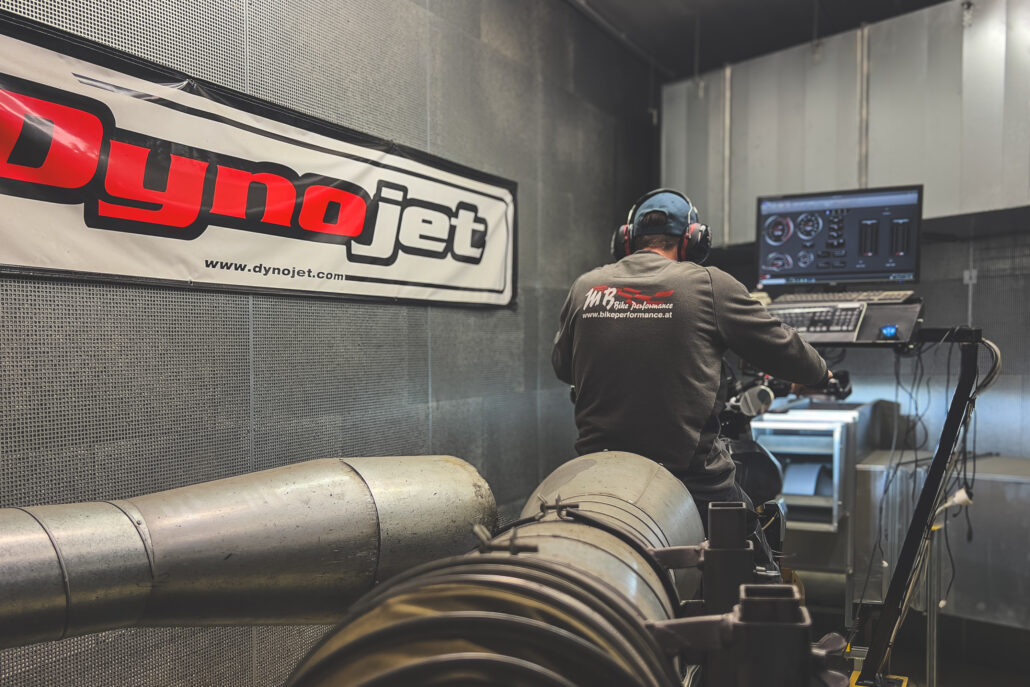
At the MB-Bikeperformance Dyno
In total, we did three Dynojet measurements, each consisting of three test runs: DNA air filter with the open air filter cover (Stage-2; Blue Curve) vs. DNA air filter with the original cover (Stage-1; Red Curve) vs. original air filter/cap/cage (Stock; Green Curve), all with stock mapping, a legal SC-Project Titan S1-C Euro-5 Slip-On (D42A-169T), and 95-octane quality fuel.
The results were impressive across the board.
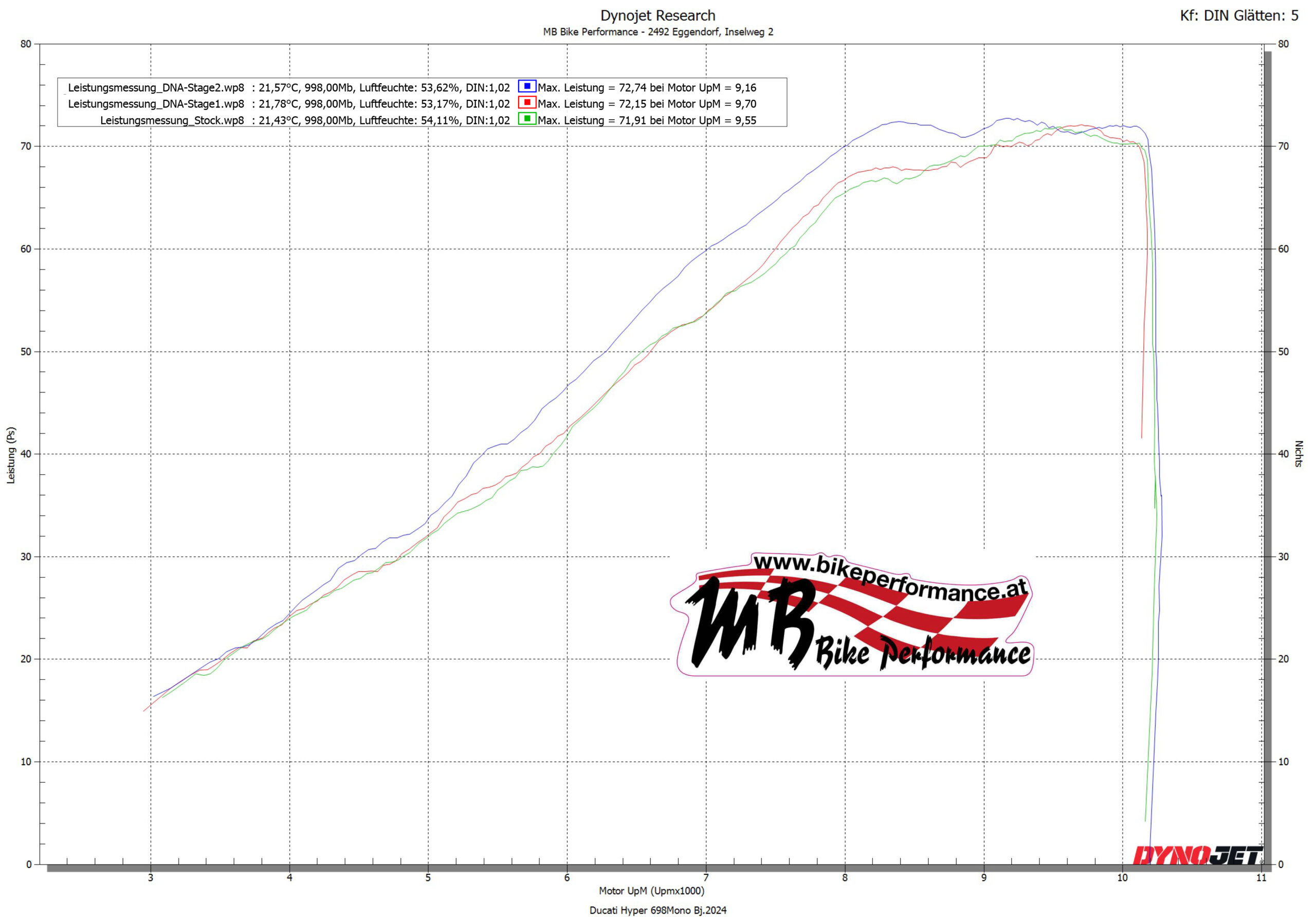
With the DNA Air Filter & Air Cover Stage-2 Combo, the Hypermotard 698 Mono delivered significantly more power starting at 4,000 RPM. At 7,000 RPM, the performance boost was evident, showing an increase of 6 HP at the rear wheel. Although the peak power only increased by about one HP, most of the power was available from 8,400 RPM onward, rather than starting at 9,500 RPM as in the stock configuration. The blue curve (Stage-2) in the graph clearly illustrates this.
Similarly, the torque also steadily increased from 4,000 RPM, with an overall gain of 4 Nm at 8,000 RPM. The entire team was impressed with the results.
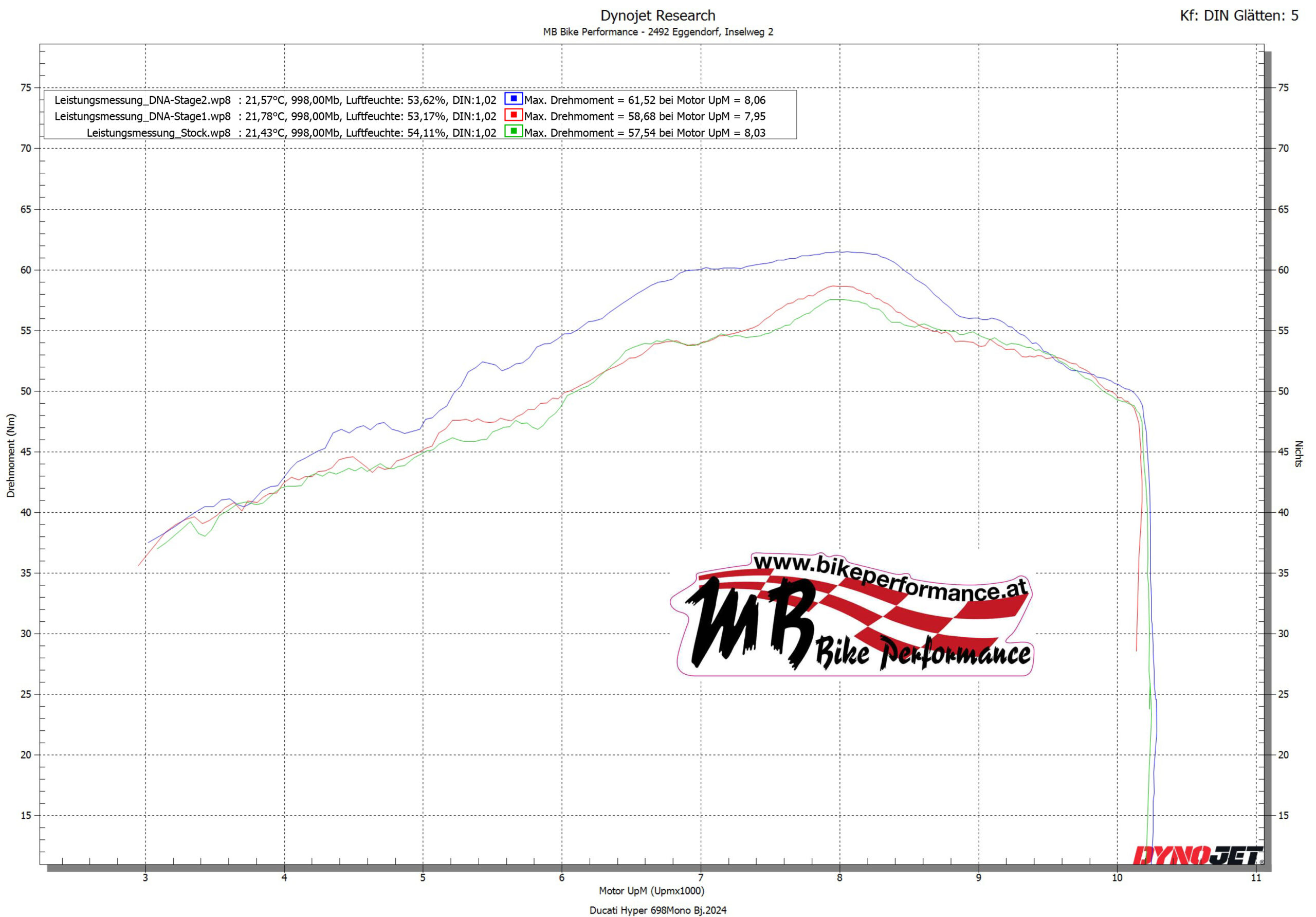
With only the DNA air filter along with the OEM air filter cage and cover (Stage-1), the performance gains compared to the stock setup were not as significant. In addition to all the positive attributes offered by a reusable air filter, we could only measure minimal power increases (red curve) on the dyno, ranging from 0.25 to 2 horsepower, with some values even lower. The curves from all three test runs were similar to the stock results. Without additional airflow, the racing filter cannot truly showcase its advantages.
After another 10-minute idle phase, we tested the OEM air filter along with the cage and cover; the curve (green curve) also matched two other Dynojet measurements we had previously seen from Pirate Racing and Hypermotard King.
Testing the risk of a too-lean mixture: To conclude, we addressed the question of whether the modifications made by the DNA air filter and the open air filter cover posed a risk of a too-lean mixture. To investigate this, we conducted three additional runs with the „open“ SC Project Racing Slip-Ons (D42A-T41TR), into which the Dynojet exhaust measurement probe could be inserted.
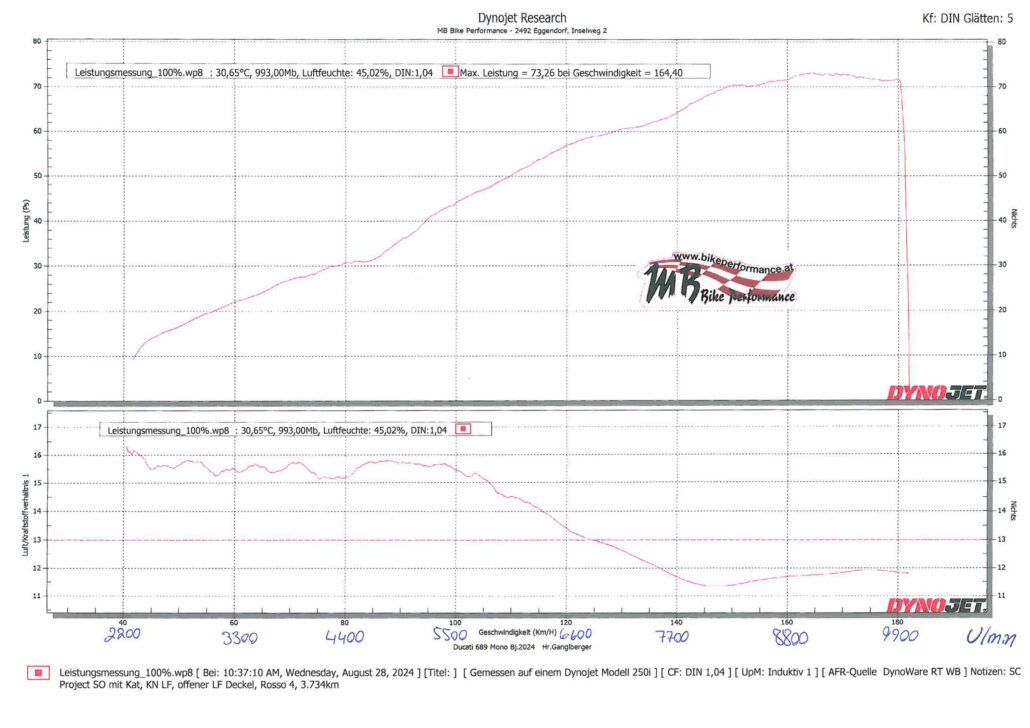
The Summary: According to our tests, there is no danger to the engine. The new DNA filter seals completely, and the air-fuel ratio remains in the safe zone even without individual engine tuning. Below 6,750 RPM, the engine already ran relatively lean due to its restrictive Euro-5 mapping before the modification, while above 6,750 RPM, it is sufficiently rich. This allows the increased airflow, even with open racing slip-ons, to be used safely for better combustion and thus higher engine performance.
It was also interesting to see that the open system with the stock mapping produced just half a horsepower more in maximum power. Therefore, it makes little sense from a performance standpoint to take the risk of being caught with an illegal system.
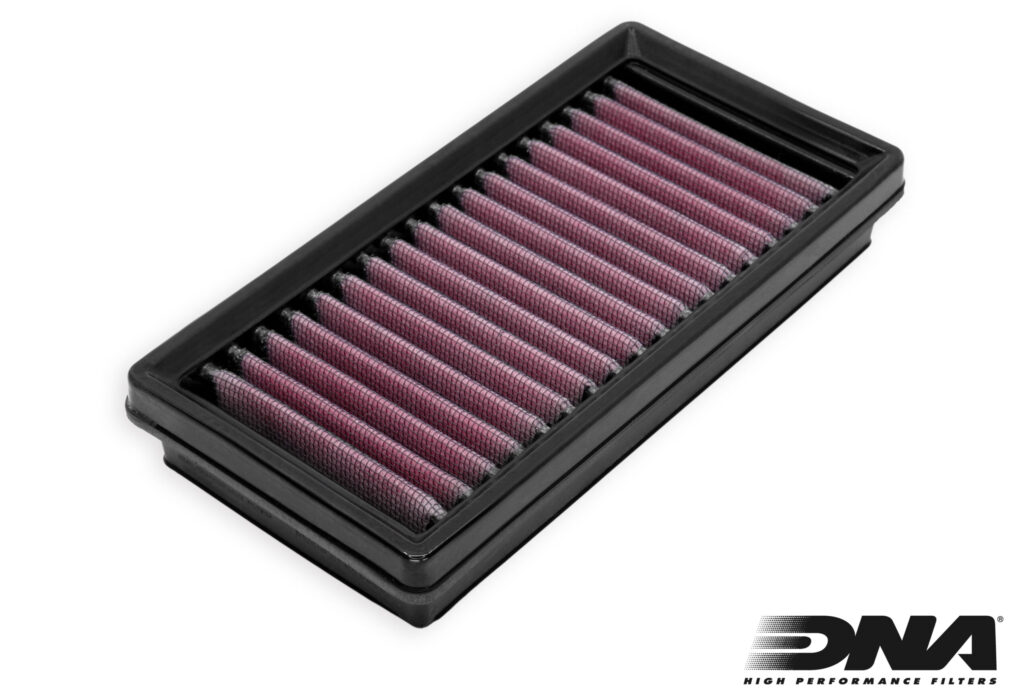
DNA Air Filter (Road & Race use)
Plug and Play: Oil-soaked high-performance air filter made from multi-layer flame-retardant cotton gauze, featuring a +77.54% increase in airflow and 98-99% filter efficiency.
DNA Article number: P-DU65HM24-01
Ducati OEM Part numbers: replaces 42610751A Filter, 8291R811A Filter cage
€ 106,60 UVP

DNA Air Filter and Air Cover Stage-2 (Race use only)
Plug, Recalibrate and Play: Oil-soaked high-performance air filter made from multi-layer flame-retardant cotton gauze, including an open air filter housing cover with a +161.40% increase in airflow and 98-99% filter efficiency. The cover has been specifically designed for the DNA High Performance Filter and is therefore not available separately.
DNA Article number: P-DU65HM24-S2-COMBO
Ducati OEM Part numbers: replaces 42610751A Filter, 8291R811A Filter cage, 24717531B Filter cover
€ 148,80 UVP
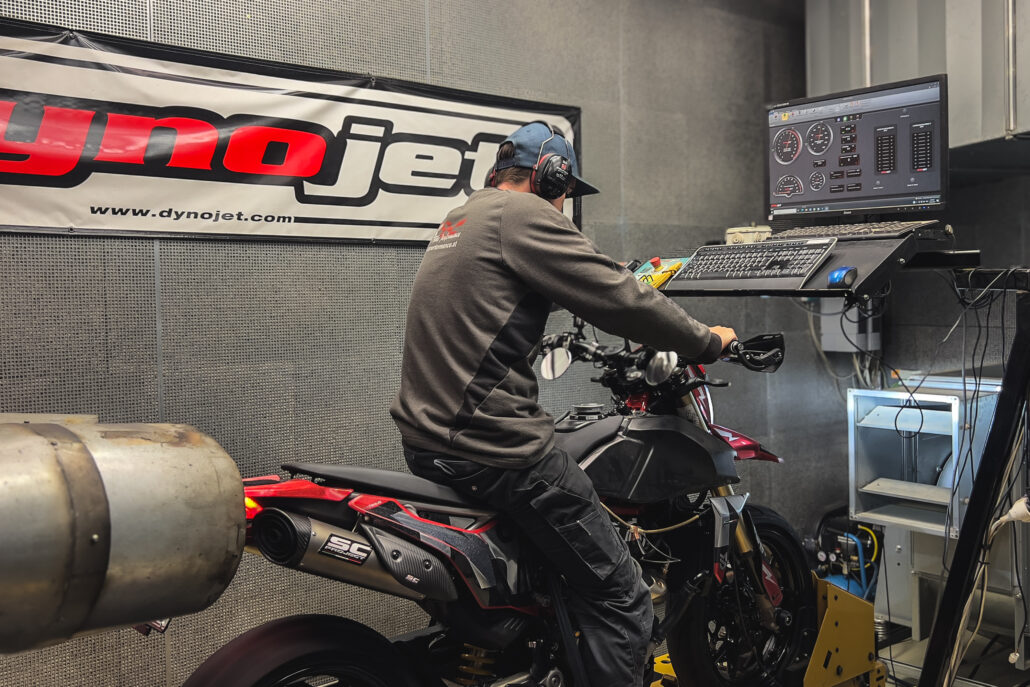
Stage-2 Performance Tip for Racers or Deeply Relaxed Connoisseurs
For those who truly want to get the absolute maximum out of the DNA Air Filter Stage-2 upgrade, an individual mapping is recommended. This involves connecting a programmable module (such as Power Commander, RapidBike, etc.) via plug connections and permanently installing it in the motorcycle. The tuning is performed on a dynamometer, both dynamically in partial load ranges and under full load. This process balances tolerances from factory variations and optimizes the injection specifically for the motorcycle, depending on the installed parts (e.g., exhaust system, air filter, etc.) or customer preferences (e.g., maximum power, lowest consumption, etc.).
Caution: Any modifications to the engine control that are not authorized by the motorcycle manufacturer will automatically void the warranty. Additionally, such modifications constitute a structural change that, without individual inspection and registration at the type approval authority, can lead to the expiration of the operating permit and, if used on public roads, the loss of insurance coverage.
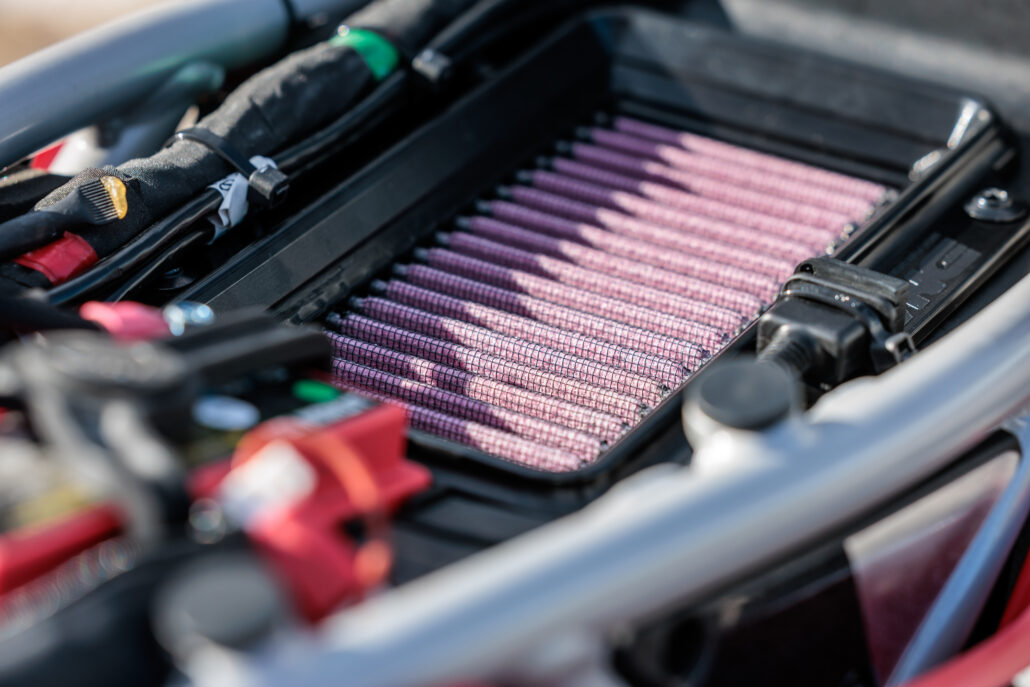
More infos about the DNA High Performance Filters you will find here
